
CIVILISASION DONGDONIENNE
Selon le
rapport chinois publié en 1988, la Chine a détenu 1460 tambours de
bronze tandis que le Vietnam en a eu 960 en 1980. Malgré leur nombre
assez élevé, il n'y aucune preuve justifiant que les premiers tambours
de bronze sont originaires de la Chine méridionale. Il suffit de
constater que le nombre important de statues de bouddhas trouvées en
Chine par rapport à celui cumulé en Inde ne cautionne pas l'origine du
bouddhisme. Il est aussi important de noter qu'un grand nombre de
tambours de bronze de type Heiger-I se trouve dans le Nord du Vietnam
(et surtout les plus beaux tambours trouvés jusque-là dans la région).
Qui sont les maîtres de ces tambours?
Beaucoup de questions ont été posées lors de leur découverte. Aucune inscription n'a été trouvée sur ces tambours. Les archéologues européens de renom comme Heine-Geldern, F. Hirth ont eu du mal de voir dans ces tambours l'oeuvre des barbares de l'Indochine car ils ne pensaient pas que ces gens colonisés d'abord par les Chinois durant 1000 ans, ensuite par les Français durant 100 ans pourraient avoir une civilisation aussi brillante que louable. Le premier est partisan de l'origine du bronze en Europe (culture Hallstatt introduite par une migration de Thraco-Cimmériens venus du Sud de Danube par le Nord de la Chine) tandis que le second attribue l'invention de ces tambours (ou tong kou) aux Chinois en évoquant la légende du général Ma Yuan (Mã Viện) des Han postérieurs qui faisait installer ces tambours au bas des cascades pour tenir en respect les peuplades du Sud. Même le chercheur français Jacques Népote a éprouvé de la difficulté à reconnaître cette culture s'enraciner dans un delta mal colmaté, sujet à de multiples inondations et à peu près désert avant l'occupation chinoise en prenant pour modèles les deltas de la Chine du Sud et de l'Indochine indianisée. En voyant les affinités certaines avec le style Huai de la Chine centrale (royaumes Wu-Yue (Ngô-Việt) à l'époque des Printemps et Automnes) dans le Dongsonien, le sinologue suédois B. Karlgren a commis la même erreur d'appréciation dans sa conclusion sauf De Groot et Heger enclins à admettre que ces tambours étaient l'oeuvre des gens locaux que les Chinois avaient l'habitude de qualifier de Man ou de barbares cuits. Le sinologue français Paul Pelliot n'a pas hésité à conforter l'hypothèse du fond local en réfutant l'origine chinoise et en s'appuyant sur l'orgueilleuse orthodoxie chinoise qui ne peut attribuer qu'à un Chinois un mérite quelconque d'invention.
Beaucoup de questions ont été posées lors de leur découverte. Aucune inscription n'a été trouvée sur ces tambours. Les archéologues européens de renom comme Heine-Geldern, F. Hirth ont eu du mal de voir dans ces tambours l'oeuvre des barbares de l'Indochine car ils ne pensaient pas que ces gens colonisés d'abord par les Chinois durant 1000 ans, ensuite par les Français durant 100 ans pourraient avoir une civilisation aussi brillante que louable. Le premier est partisan de l'origine du bronze en Europe (culture Hallstatt introduite par une migration de Thraco-Cimmériens venus du Sud de Danube par le Nord de la Chine) tandis que le second attribue l'invention de ces tambours (ou tong kou) aux Chinois en évoquant la légende du général Ma Yuan (Mã Viện) des Han postérieurs qui faisait installer ces tambours au bas des cascades pour tenir en respect les peuplades du Sud. Même le chercheur français Jacques Népote a éprouvé de la difficulté à reconnaître cette culture s'enraciner dans un delta mal colmaté, sujet à de multiples inondations et à peu près désert avant l'occupation chinoise en prenant pour modèles les deltas de la Chine du Sud et de l'Indochine indianisée. En voyant les affinités certaines avec le style Huai de la Chine centrale (royaumes Wu-Yue (Ngô-Việt) à l'époque des Printemps et Automnes) dans le Dongsonien, le sinologue suédois B. Karlgren a commis la même erreur d'appréciation dans sa conclusion sauf De Groot et Heger enclins à admettre que ces tambours étaient l'oeuvre des gens locaux que les Chinois avaient l'habitude de qualifier de Man ou de barbares cuits. Le sinologue français Paul Pelliot n'a pas hésité à conforter l'hypothèse du fond local en réfutant l'origine chinoise et en s'appuyant sur l'orgueilleuse orthodoxie chinoise qui ne peut attribuer qu'à un Chinois un mérite quelconque d'invention.
Détruire cet instrument c'est détruire leur
puissance, leur souveraineté, leur faire oublier leur identité avant de
pouvoir les soumettre pour toujours. C'est aussi une façon d'élever les
Giao Chỉ à un niveau de civilisation plus élevé avec l'expansion
impériale chinoise selon l'historien américain Joseph Buttinger (2) ou
de les enfermer pour toujours dans le carré magique de la sinologue
française Christine Nguyễn Tri (3).
Joueur de Khèn
Xiao Rong Han: The Present Echoes of the Ancient Bronze Drum: Nationalism and Archeology in Modern Vietnam and China , Explorations in Southeast Asian studies, 1998,Volume 2,no 2
(2) Joseph Buttinger : The smaller dragon: a political history of Viet Nam, Praeger, 1958.
(3) Christine Nguyen Tri: La conquête de l’espace
chinois sous les Qin et les Han 221 avant notre ère-220 de notre ère.
Cahiers du CEHD, n° 34).
29. L'Age des Métaux
L'Age des Métaux à
Sumatra nous a laissé beaucoup plus de traces que le Néolithique, où
apparaissent le bronze et le fer que l'on peut approximativement [1]
dater entre 1000 av.J.C et 500 ap.J.C [2]. Sur l'un des sites du Lac
Kerinci ont été mis à jour un anneau brachial en bronze, un morceau de
tambour dongsonnien de type Heger I et un vase décoré de fines spirales
en bas-relief (fig. ) [3]. Sur le site de Bangkinang, au Sud de
Sumatra, ont été trouvés un groupe de 14 statuettes en bronze et 4
bracelets décorés de spirales en bas-relief. Les statuettes représentent
des danseurs portant bracelets, anneaux de cheville, boucles d'oreille,
pagnes, et ornements de poitrine en forme de spirales. Là encore, nous
trouvons de nombreuses similitudes avec les sites continentaux que nous
allons tenter d'exposer brièvement.
"Dong Son" est l'expression classique permettant de définir les périodes préhistoriques et protohistoriques de la métallurgie du bronze en Asie du Sud-Est. Sans savoir si l'on doit parler de culture ou de style, les foyers les plus importants sont ceux de Dong Son, de Viet Khe et Shih Chai Shan [4] (fig. ), dont on retrouve les traces en Indonésie jusqu'aux petites îles d'Aru. Les plus célèbres témoins que l'on ait de cette culture sont les tambours de bronze de style Heger I [5] dont les premières représentations [6] se caractérisent par une série de cercles concentriques décorés de motifs géométriques, de hachures et parfois de gravures d'hommes armés et coiffés de plumes, d'oiseaux volants, de lézards, poissons, tambours et maisons sur pilotis. Le centre des tambours est toujours marqué d'une "étoile" généralement à 12 branches, et les flancs sont décorés dans la plupart des cas de frises de bateaux à proue en tête d'oiseau avec la queue en poupe [7]. La datation la plus probable de cette culture du bronze semble pouvoir se situer entre 800 av.J-C et 400 ap.J-C [8], bien que certains peuples, tel au Laos et sur les petites îles d'Alor, les utilisent toujours comme symbole de statut social, d'instrument pour "l'appel des esprits ancestraux" (Laos) ou comme monnaie d'échange lors des mariages (Alor).
Janse [9] a également mis en évidence en 1962 les traces de maisons sur pilotis sur les bords de la rivière Song Ma (Thanh Hoa), mais sans certitudes exactes sur les possibilités éventuelles d'une urbanisation [10]. Il conclue en suggérant qu'il s'agît certainement d'une société fermière organisée, dont on retrouve houes et faucilles. Toutefois, les plus nombreux et surprenant objets découverts sont les bijoux et décorations de vêtement, les poignards, les haches, pointes de lances et miniatures de tambours et de cloches. Certains de ces poignards ont des représentations anthropomorphiques retrouvées à Dong Son, Ha Dong, Nui Nua, Thao Kham (Laos) et Ch'ing-yuan (prés de Hong Kong).
Les bronzes du Nord Viet'Nam sont à haute teneur en plomb, tels ceux des sites insulindiens, et sont fabriqués suivant la technique de cire perdue [11], dont de nombreux moules ont été retrouvés au Nord du Viet'Nam et en Indonésie. L'utilisation de ces bronzes a soulevé de nombreuses interprétations telles ceux de Dong Son où Goloubew [12] voit dans les gravures de bateaux de Dong Son des représentations du "bateau de l'âme" accompagnant les défunts au "Paradis" [13].
"Dong Son" est l'expression classique permettant de définir les périodes préhistoriques et protohistoriques de la métallurgie du bronze en Asie du Sud-Est. Sans savoir si l'on doit parler de culture ou de style, les foyers les plus importants sont ceux de Dong Son, de Viet Khe et Shih Chai Shan [4] (fig. ), dont on retrouve les traces en Indonésie jusqu'aux petites îles d'Aru. Les plus célèbres témoins que l'on ait de cette culture sont les tambours de bronze de style Heger I [5] dont les premières représentations [6] se caractérisent par une série de cercles concentriques décorés de motifs géométriques, de hachures et parfois de gravures d'hommes armés et coiffés de plumes, d'oiseaux volants, de lézards, poissons, tambours et maisons sur pilotis. Le centre des tambours est toujours marqué d'une "étoile" généralement à 12 branches, et les flancs sont décorés dans la plupart des cas de frises de bateaux à proue en tête d'oiseau avec la queue en poupe [7]. La datation la plus probable de cette culture du bronze semble pouvoir se situer entre 800 av.J-C et 400 ap.J-C [8], bien que certains peuples, tel au Laos et sur les petites îles d'Alor, les utilisent toujours comme symbole de statut social, d'instrument pour "l'appel des esprits ancestraux" (Laos) ou comme monnaie d'échange lors des mariages (Alor).
Janse [9] a également mis en évidence en 1962 les traces de maisons sur pilotis sur les bords de la rivière Song Ma (Thanh Hoa), mais sans certitudes exactes sur les possibilités éventuelles d'une urbanisation [10]. Il conclue en suggérant qu'il s'agît certainement d'une société fermière organisée, dont on retrouve houes et faucilles. Toutefois, les plus nombreux et surprenant objets découverts sont les bijoux et décorations de vêtement, les poignards, les haches, pointes de lances et miniatures de tambours et de cloches. Certains de ces poignards ont des représentations anthropomorphiques retrouvées à Dong Son, Ha Dong, Nui Nua, Thao Kham (Laos) et Ch'ing-yuan (prés de Hong Kong).
Les bronzes du Nord Viet'Nam sont à haute teneur en plomb, tels ceux des sites insulindiens, et sont fabriqués suivant la technique de cire perdue [11], dont de nombreux moules ont été retrouvés au Nord du Viet'Nam et en Indonésie. L'utilisation de ces bronzes a soulevé de nombreuses interprétations telles ceux de Dong Son où Goloubew [12] voit dans les gravures de bateaux de Dong Son des représentations du "bateau de l'âme" accompagnant les défunts au "Paradis" [13].
Les
tambours de bronze de Shih Chai Shan [14] ont un style quelque peu
différent, dont le cercle du milieu n'a pas toujours la forme d'une
étoile, les décors suivent d'autres géométries, avec des triangles au
lieu des hachures, et des scènes d'engrangement au lieu des bateaux du
style Dong Son. Mais, bien que ce site ait livré de nombreux tambours la
plus grande particularité que nous retiendrons est celle des récipients
à cauris en bronze dont nombreux sont surmontés de bâtiments en
ronde-bosse, tels des greniers ou des "maisons de cérémonie" et des
groupements de constructions à faîtière tendue [15]. A ce site est
également associé un complexe comprenant des statuettes
anthropomorphiques, des scènes de chasse, de danses (cérémonielle ou
guerrière), des bracelets, anneaux d'oreilles, plaques de poitrine
décorées de spirales, des cloches décorées et des poteries marquées à la
corde ou incisées. Peter Bellwood note les "mystérieuses relations" que
l'on trouve entre l'ensemble de ces styles et les sites de Somrong Sen
au Cambodge, et de Non Nok Tha, en Thaïlande.
L'Age des Métaux en Insulinde a livré une vaste collection de tambours de bronze de type Heger I, mais aucune certitude ne nous permet d'affirmer que cette industrie lui était endémique. Les moules de tambours en Indonésie [16] nous montrent une production locale que le style moko des îles d'Alor, Flores et Bali vient confirmer, toutefois la question des tambours de type Heger I reste en suspend, puisque aucune origine ne peut encore être tracée réellement d'après les vestiges insulindiens. La seule certitude réelle que nous ayons est l'existence d'échanges entre Viet'Nam et Indonésie à l'Age des Métaux [17].
En Inde, l'Age des Métaux commence avec la culture Pré-Harappan (3 000- 2 400 av.J-C) où ont été mis à jours quelques anneaux, hachettes (bronze à dominance de cuivre?), divers couteaux et outils en cuivre (liés à l'arsenic). Cette culture se caractérise par son haut niveau d'urbanisation avec des villes planifiées et fortifiées, des drainages souterrains et une société stratifiée en diverses couches sociales [18]. La période Harappan suivante (2 400- 1 700 av.J-C) a livré de nombreux ciseaux, couteaux, outils, pointes de lances, rasoirs, scies, et pots de formes diverses, figurines anthropo- ou zoomorphiques, balances, etc... en cuivre lié à l'étain ou à l'arsenic. Je n'ai trouvé aucune autre information sur l'Age des Métaux au Nord-Est de l'Inde, pouvant se rapporter au sujet qui nous intéresse.
[1]- Sans diagrammes pollens ou carbon dates, l'approximation en archéologie peut être de quelques 1000 voire 2000 ans, mais cela varie également en fonction du niveau d'information des rapports de fouille et de la présence ou pas de publications. Pour ce qui est de la datation de l'Age des Métaux à Sumatra, cette approximation est de mise, puisqu'il est probable qu'il ait été antérieur à 1 500 av.JC. De même Bennet Bronson souligne: "Prehistoric metal undoubtebly existed in Sumatra in terms of accessible nature ressources, which include numerous deposits of tin, iron, copper, and gold, the island is perhaps as faroured an area for early metallurgy as any other part of the world . Yet few obviously prehistoric specimens have been reported. The only exceptions are three or four bronze kettledrums from Kerinci, Benkulen, and Lampung, some related bronzes from Kerinci, a number of small objects from 'megalithic' cist graves in the Pasemah area, and a set of bronze figurines from Riau province. Any of these could have been made in the first millennium B.C; although for some a prehistoric dating seems more probable". cf. Bennet Bronson-op.cit.
[2]- P. Bellwood-op.cit.p 222.
[3]- Sur le Kerinci, voir Pline l'Ancien- Histoire Naturelle- Livre VI- 2ème partie- Les belles Lettres- 1980. p 146 et suivantes.
[4]- Aucune jarre n'a été exhumée sur les sites du Nord- Viet'Nam ou du Yunnan. Toutes les tombes sont à fausse.
[5]- La culture dongsonienne se caractérise par les tambours de bronze, toutefois les styles de Dong Son, Viet Khe et Shih Chai Shan sont quelque peu différents. Le "type Heger I", tel le fragment trouvé à Sumatra, est celui que l'on rencontre plus fréquement à Dong Son.
[6]- Goloubew voit dans les bronze dongsonniens une origine hallstattienne (Haute Autriche), mais nous l'avons vu, le bronze était connu à Non Nok Tha dés 3 000 av.JC, on ne peut donc négliger la piste chinoise où des traces de bronze ont été datée de 5000 av.JC. De plus, certaines céramiques de Sa-Huynh rappellent étrangement la forme des tambours, de même que les motifs des céramiques de Somrong Sen sont réellement trés proches de ceux de Dong Son, et de date plus ancienne, ce qui pourrait suggérer d'autres influences que celles d' Hallstatt. De même, on retrouve en Inde des figurines anthropo- et zoomorphiques dés 2 500 av.J-C, ce qui pourrait, non pas être une réelle source d'influence, mais une incitation à d'autres créations telles celles de Dian. Nous ne savons toujours pas quelle était l'origine des gens de Dian. Certains pensent qu'il s'agissait du Laos, d'autre de la Birmanie, et d'autres encore d'une région qu'il reste à déterminer.- cf. R.Heine-Geldern- L'Art Prébouddhique de la Chine et de l'Asie du Sud-Est et son influence en Océanie- Revue des Arts Asiatiques- XI- 1937, et D.P Agrawal-op.cit.
[7]- A Ngoc Lu et à Hoang Ha, au Nord du Viet'Nam, il y a sur des bâteaux de petites cabines abritant un tambour ayant éveillé les plus vastes interprétations.
[8]- Les archeologues vietnamiens ont trouvés dans la région de Dong Son des traces de bronze datées de 1 500 av.JC, de même que les premières industries de cuivre (lié à l'étain) auraient pu commencer entre 4 000- 3 500 av. JC- cf Pham Minh Huyen- Various Phases of the Development of Primitive Metallurgy in Viet'Nam- Recent Advances in Indo Pacific Prehistory- Misra, Bellwood- 1985. Toutefois, les archeologues vietnamiens sont les seuls à avancer cette datation. Voir également Magdalene von Dewall- Local Workshop Centres of the Late Bronze Age in Highland South East Asia- History and historical Geographie- RB. Smith et W. Watson- 1979.
[9]- O.R.T Janse- The Ancient Dwelling Site of Dong Son (Thanh-Hoa, Annam)- Archeological research in Indochina- Vol I- Institut Belge des Hautes Etudes Chinoises- 1958.
[10]- Le site a été saccagé en 43 ap. JC par le Général chinois Ma-Yuan, lors d'une répression punitive contre les rebellions. Il ne reste dans les couches anciennes des fouilles que quelques vestiges antécédents à ce massacre, ce qui ne laisse que peut de preuve sur la civilisation dongsonnienne de la première période.
[11]- Cette technique était inconnue en Chine (Nord de la Chine certainement-cf.P. Bellwood) jusqu'à 100 ap.JC, mais la culture Harappan à l'Ouest de l'Inde l'utilisait dés 2 400 av.J-C.
[12]- Goloubew V.- L'âge du bronze au Tonkin- BEFEO- 1929.
[13]- Je serais plutôt d'avis à penser que ces tambours sont associés à la navigation, ce qui n'exclus pas leur utilisation lors de cérémonies mortuaires, surtout dans le cas des populations méridionales. L'étoile au centre des tambours est généralement à 12 branches, soit 4 quarts de cercle divisés en trois, tels les mois de l'année et la rose des vents, et sont symbolisées par des flèches concentriques souvent divisées en trois sections, comme un oiseau vu du dessus (on retrouve la même division de la rose des vents dans le lu ban jing -manuel de construction- en Chine). Les oiseaux sont représentés en vol, tels les oiseaux migrateurs qui retrouvent toujours leur route, et cette route est également celle de la maison, toujours habitée, et gravée elle aussi sur le dessus des tambours. De part et d'autre de l'axe des maisons se trouvent représentées deux autres constructions à poteaux posés sur pierres (en forme de "champignons renversés comme à Non Nok Tha) où l'axe est cette fois marqué par un décrochage dans le plancher. Il pourrait s'agir d'un bâtiment mortuaires (qui n'aurait pas la forme d'une maison ?) ou la marque de l'entrée du village. Les personnages du dessus dancent et battent du tambour, alors que ceux des côtés voguent en habit de combat (pagnes plus courts, mais il pourrait également s'agir d'une démarcation de cultures entre deux-ou plus- régions ayant des affinités communes représentées sur les tambours). Sur les flancs, sont représentés les bâteaux , avec des personnages armés, un autre assis à l'arrière pour tenir le gouvernail et l'autre à l'avant avec un instrument de visée. Il n'y a ni rameur ni voilure, mais si ces bâteaux voguaient en nombre, on comprend l'utilisation que l'on pouvait avoir des tambours. En résumé, tout ce qui est au dessus des tambours pourait représenter ce que l'on cherche, ce que l'on doit atteindre (ou ce que l'on doit retrouver), alors que tout ce qui est sur les côtés pourrait représenter ce que l'on fait, l'état ou le monde dans lequel on se trouve.?
[14]- Cette culture de Shih Chai Shan telle que nous la retrouverons par la suite est celle du Royaume de Dian. Notons l'absence des mégalithes, à Dian et Dong Son.
[15]- Voir la définition de faîtière tendue en deuxième partie.
[16]- Les lieux les plus communs où l'on retrouve ces bronzes sont ceux de Java, Bali et Sumatra, alors que les moules ont été retrouvés près de Bandung, dans les caves de Tapandong (Sabah) et à Leang Buidan sur les îles Talaud.
[17]- Ce qu'il faut retenir ici, c'est surtout le style de ces tambours dongsonniens, à savoir si leur fonction est surtout liée à des activités maritimes, ou si les styles laissent paraître également des scènes d'engrangement.
[18]- cf. D.P. Agrawal-op.cit. Toutefois, L. Frédéric nous donne un peu plus de détails sur cet urbanisme, en précisant que les fortifications étaient construites en briques.
L'Age des Métaux
http://www.sandrine-germain.com/#!lage-des-mtaux/cqj8
L'Age des Métaux en Insulinde a livré une vaste collection de tambours de bronze de type Heger I, mais aucune certitude ne nous permet d'affirmer que cette industrie lui était endémique. Les moules de tambours en Indonésie [16] nous montrent une production locale que le style moko des îles d'Alor, Flores et Bali vient confirmer, toutefois la question des tambours de type Heger I reste en suspend, puisque aucune origine ne peut encore être tracée réellement d'après les vestiges insulindiens. La seule certitude réelle que nous ayons est l'existence d'échanges entre Viet'Nam et Indonésie à l'Age des Métaux [17].
En Inde, l'Age des Métaux commence avec la culture Pré-Harappan (3 000- 2 400 av.J-C) où ont été mis à jours quelques anneaux, hachettes (bronze à dominance de cuivre?), divers couteaux et outils en cuivre (liés à l'arsenic). Cette culture se caractérise par son haut niveau d'urbanisation avec des villes planifiées et fortifiées, des drainages souterrains et une société stratifiée en diverses couches sociales [18]. La période Harappan suivante (2 400- 1 700 av.J-C) a livré de nombreux ciseaux, couteaux, outils, pointes de lances, rasoirs, scies, et pots de formes diverses, figurines anthropo- ou zoomorphiques, balances, etc... en cuivre lié à l'étain ou à l'arsenic. Je n'ai trouvé aucune autre information sur l'Age des Métaux au Nord-Est de l'Inde, pouvant se rapporter au sujet qui nous intéresse.
[1]- Sans diagrammes pollens ou carbon dates, l'approximation en archéologie peut être de quelques 1000 voire 2000 ans, mais cela varie également en fonction du niveau d'information des rapports de fouille et de la présence ou pas de publications. Pour ce qui est de la datation de l'Age des Métaux à Sumatra, cette approximation est de mise, puisqu'il est probable qu'il ait été antérieur à 1 500 av.JC. De même Bennet Bronson souligne: "Prehistoric metal undoubtebly existed in Sumatra in terms of accessible nature ressources, which include numerous deposits of tin, iron, copper, and gold, the island is perhaps as faroured an area for early metallurgy as any other part of the world . Yet few obviously prehistoric specimens have been reported. The only exceptions are three or four bronze kettledrums from Kerinci, Benkulen, and Lampung, some related bronzes from Kerinci, a number of small objects from 'megalithic' cist graves in the Pasemah area, and a set of bronze figurines from Riau province. Any of these could have been made in the first millennium B.C; although for some a prehistoric dating seems more probable". cf. Bennet Bronson-op.cit.
[2]- P. Bellwood-op.cit.p 222.
[3]- Sur le Kerinci, voir Pline l'Ancien- Histoire Naturelle- Livre VI- 2ème partie- Les belles Lettres- 1980. p 146 et suivantes.
[4]- Aucune jarre n'a été exhumée sur les sites du Nord- Viet'Nam ou du Yunnan. Toutes les tombes sont à fausse.
[5]- La culture dongsonienne se caractérise par les tambours de bronze, toutefois les styles de Dong Son, Viet Khe et Shih Chai Shan sont quelque peu différents. Le "type Heger I", tel le fragment trouvé à Sumatra, est celui que l'on rencontre plus fréquement à Dong Son.
[6]- Goloubew voit dans les bronze dongsonniens une origine hallstattienne (Haute Autriche), mais nous l'avons vu, le bronze était connu à Non Nok Tha dés 3 000 av.JC, on ne peut donc négliger la piste chinoise où des traces de bronze ont été datée de 5000 av.JC. De plus, certaines céramiques de Sa-Huynh rappellent étrangement la forme des tambours, de même que les motifs des céramiques de Somrong Sen sont réellement trés proches de ceux de Dong Son, et de date plus ancienne, ce qui pourrait suggérer d'autres influences que celles d' Hallstatt. De même, on retrouve en Inde des figurines anthropo- et zoomorphiques dés 2 500 av.J-C, ce qui pourrait, non pas être une réelle source d'influence, mais une incitation à d'autres créations telles celles de Dian. Nous ne savons toujours pas quelle était l'origine des gens de Dian. Certains pensent qu'il s'agissait du Laos, d'autre de la Birmanie, et d'autres encore d'une région qu'il reste à déterminer.- cf. R.Heine-Geldern- L'Art Prébouddhique de la Chine et de l'Asie du Sud-Est et son influence en Océanie- Revue des Arts Asiatiques- XI- 1937, et D.P Agrawal-op.cit.
[7]- A Ngoc Lu et à Hoang Ha, au Nord du Viet'Nam, il y a sur des bâteaux de petites cabines abritant un tambour ayant éveillé les plus vastes interprétations.
[8]- Les archeologues vietnamiens ont trouvés dans la région de Dong Son des traces de bronze datées de 1 500 av.JC, de même que les premières industries de cuivre (lié à l'étain) auraient pu commencer entre 4 000- 3 500 av. JC- cf Pham Minh Huyen- Various Phases of the Development of Primitive Metallurgy in Viet'Nam- Recent Advances in Indo Pacific Prehistory- Misra, Bellwood- 1985. Toutefois, les archeologues vietnamiens sont les seuls à avancer cette datation. Voir également Magdalene von Dewall- Local Workshop Centres of the Late Bronze Age in Highland South East Asia- History and historical Geographie- RB. Smith et W. Watson- 1979.
[9]- O.R.T Janse- The Ancient Dwelling Site of Dong Son (Thanh-Hoa, Annam)- Archeological research in Indochina- Vol I- Institut Belge des Hautes Etudes Chinoises- 1958.
[10]- Le site a été saccagé en 43 ap. JC par le Général chinois Ma-Yuan, lors d'une répression punitive contre les rebellions. Il ne reste dans les couches anciennes des fouilles que quelques vestiges antécédents à ce massacre, ce qui ne laisse que peut de preuve sur la civilisation dongsonnienne de la première période.
[11]- Cette technique était inconnue en Chine (Nord de la Chine certainement-cf.P. Bellwood) jusqu'à 100 ap.JC, mais la culture Harappan à l'Ouest de l'Inde l'utilisait dés 2 400 av.J-C.
[12]- Goloubew V.- L'âge du bronze au Tonkin- BEFEO- 1929.
[13]- Je serais plutôt d'avis à penser que ces tambours sont associés à la navigation, ce qui n'exclus pas leur utilisation lors de cérémonies mortuaires, surtout dans le cas des populations méridionales. L'étoile au centre des tambours est généralement à 12 branches, soit 4 quarts de cercle divisés en trois, tels les mois de l'année et la rose des vents, et sont symbolisées par des flèches concentriques souvent divisées en trois sections, comme un oiseau vu du dessus (on retrouve la même division de la rose des vents dans le lu ban jing -manuel de construction- en Chine). Les oiseaux sont représentés en vol, tels les oiseaux migrateurs qui retrouvent toujours leur route, et cette route est également celle de la maison, toujours habitée, et gravée elle aussi sur le dessus des tambours. De part et d'autre de l'axe des maisons se trouvent représentées deux autres constructions à poteaux posés sur pierres (en forme de "champignons renversés comme à Non Nok Tha) où l'axe est cette fois marqué par un décrochage dans le plancher. Il pourrait s'agir d'un bâtiment mortuaires (qui n'aurait pas la forme d'une maison ?) ou la marque de l'entrée du village. Les personnages du dessus dancent et battent du tambour, alors que ceux des côtés voguent en habit de combat (pagnes plus courts, mais il pourrait également s'agir d'une démarcation de cultures entre deux-ou plus- régions ayant des affinités communes représentées sur les tambours). Sur les flancs, sont représentés les bâteaux , avec des personnages armés, un autre assis à l'arrière pour tenir le gouvernail et l'autre à l'avant avec un instrument de visée. Il n'y a ni rameur ni voilure, mais si ces bâteaux voguaient en nombre, on comprend l'utilisation que l'on pouvait avoir des tambours. En résumé, tout ce qui est au dessus des tambours pourait représenter ce que l'on cherche, ce que l'on doit atteindre (ou ce que l'on doit retrouver), alors que tout ce qui est sur les côtés pourrait représenter ce que l'on fait, l'état ou le monde dans lequel on se trouve.?
[14]- Cette culture de Shih Chai Shan telle que nous la retrouverons par la suite est celle du Royaume de Dian. Notons l'absence des mégalithes, à Dian et Dong Son.
[15]- Voir la définition de faîtière tendue en deuxième partie.
[16]- Les lieux les plus communs où l'on retrouve ces bronzes sont ceux de Java, Bali et Sumatra, alors que les moules ont été retrouvés près de Bandung, dans les caves de Tapandong (Sabah) et à Leang Buidan sur les îles Talaud.
[17]- Ce qu'il faut retenir ici, c'est surtout le style de ces tambours dongsonniens, à savoir si leur fonction est surtout liée à des activités maritimes, ou si les styles laissent paraître également des scènes d'engrangement.
[18]- cf. D.P. Agrawal-op.cit. Toutefois, L. Frédéric nous donne un peu plus de détails sur cet urbanisme, en précisant que les fortifications étaient construites en briques.
L'Age des Métaux
http://www.sandrine-germain.com/#!lage-des-mtaux/cqj8
06 août 2012
30. Plateau de tambour. Vietnam. Culture de Dong Son (env. 500-100 av. J.-C.)Plateau de tambour. Vietnam. Culture de Dong Son (env. 500-100 av. J.-C.). Bronze. D : 36 cm. M.C. 8006-A. Culture de Dong Son (env. 500-100 av. J.-C.) - . Copyright Stéphane Piera / Musée Cernuschi / Roger-Viollet
Les tambours de bronze sont
caractéristiques des cultures des régions du nord du Vietnam et du sud
et sud-ouest de la Chine où ils continuent à être utilisés aujourd’hui
pour rythmer les chants et les danses des populations du sud de la
Chine, lors des fêtes et des funérailles.
Ils
apparurent dès l’aube du Ier millénaire avant J.-C. et sont les objets
les plus emblématiques de la culture de Dong Son. Sur la paroi de
certains grands tambours sont représentées des scènes qui sont les seuls
indices nous permettant d’imaginer le contexte dans lequel ces
instruments étaient utilisés. On y voit des guerriers coiffés de plumes
se tenant sur de longues pirogues, des estrades où des musiciens
frappent des tambours à l’aide de maillets, des danseurs armés de haches
et coiffés de plumes, des maisons et des greniers sur pilotis.
Différentes espèces d’oiseaux aquatiques, des frises de cervidés, des
sortes de dragons et de petits félins peuvent aussi y être figurés.
Le centre du
plateau est toujours occupé par une étoile en relief plus fort et
bombé, venant peut-être renforcer le point de frappe. Ce symbole solaire
ou stellaire pourrait évoquer à la fois le rayonnement des vibrations
sonores et les forces célestes que le chant du tambour permettait de
réguler.
Autour de l’étoile à huit branches, un motif d’oiseau de profil et volant dans le sens anti-horaire est répété quatre fois. Dans ces oiseaux au long bec et à la longue queue on a pu reconnaître une espèce de héron ou de pélican. Quoiqu’il en soit, cet oiseau en vol, par sa présence constante sur les plateaux de tambour, semble avoir été un animal très important pour cette civilisation. Peut-être renvoyait-il à l’animal totem du clan dominant ?
Des filets doubles ou triples, des hachures et des frises de cercles pointés reliés par des tangentes complètent le décor concentrique de ce plateau de tambour dont la caisse de résonance a été écrasée pendant l’enfouissement.
Les tambours de bronze de la culture de Dong Son ont été découverts parmi le mobilier funéraire déposé dans les tombes de personnages de haut rang, mais ils ont aussi pu être transmis et vénérés de génération en génération. Les siècles passants, il est difficile de savoir si les rituels de fertilité encore pratiqués aujourd’hui au son des tambours de bronze conservent la même signification que ceux pratiqués à la fin du 1er millénaire avant J.-C. Anne Juin
Mode d'acquisition : Mission Janse, 1934-1935
Référence: Helen Loveday, Viêt Nam : Collection vietnamienne du musée Cernuschi, Editions Findakly - Paris-Musées, 2006, p.39
Autour de l’étoile à huit branches, un motif d’oiseau de profil et volant dans le sens anti-horaire est répété quatre fois. Dans ces oiseaux au long bec et à la longue queue on a pu reconnaître une espèce de héron ou de pélican. Quoiqu’il en soit, cet oiseau en vol, par sa présence constante sur les plateaux de tambour, semble avoir été un animal très important pour cette civilisation. Peut-être renvoyait-il à l’animal totem du clan dominant ?
Des filets doubles ou triples, des hachures et des frises de cercles pointés reliés par des tangentes complètent le décor concentrique de ce plateau de tambour dont la caisse de résonance a été écrasée pendant l’enfouissement.
Les tambours de bronze de la culture de Dong Son ont été découverts parmi le mobilier funéraire déposé dans les tombes de personnages de haut rang, mais ils ont aussi pu être transmis et vénérés de génération en génération. Les siècles passants, il est difficile de savoir si les rituels de fertilité encore pratiqués aujourd’hui au son des tambours de bronze conservent la même signification que ceux pratiqués à la fin du 1er millénaire avant J.-C. Anne Juin
Mode d'acquisition : Mission Janse, 1934-1935
Référence: Helen Loveday, Viêt Nam : Collection vietnamienne du musée Cernuschi, Editions Findakly - Paris-Musées, 2006, p.39
Tags : Culture de Dong Son, Plateau de tambour, vietnam
La
culture de Đông Sơn s'est développée durant l'âge du bronze au Nord
Vietnam, du bassin du fleuve Rouge jusqu'aux fleuves Mã et Lam. Les
populations de la culture de Đông Sơn également connues comme Lạc ou Lạc
Việt étaient sédentarisées, et se consacraient à la pêche, l'élevage et
la culture du riz. Leur réputation est essentiellement liée à leur
pratique de la fonte du bronze dont les célèbres tambours sont de
précieux témoignages, qu'on retrouve du Sud de la Chine à l'ensemble de
l'Asie du Sud-Est où de nombreux groupes fondent encore aujourd'hui des
instruments dérivés des archétypes Dôngsonniens.
are et Important Tambour de
Bronze, 5° - 3° siècles avant notre ère. Vietnam, culture de Đông Sơn.
photo courtesy Cornette de Saint Cyr
La forme classique, avec base évasée et
corps droit supportant le tore, avec quatre doubles anses reliant le
corps au tore est caractéristique du type I de la classification des
tambours Dôngsoniens établie en 1902 par Heger.
Le corps est orné de classiques motifs
linéaires et circulaires disposés dans des registres verticaux et
horizontaux. Le plateau circulaire est marqué en son centre par un motif
en forme d‘étoile en relief qui aurait une connotation solaire. Autour
de l'astre, sont disposés des registres circulaires concentriques garnis
de motifs géométriques. L'un d'entre eux présente des oiseaux en, plein
vol (probablement des échassiers, identifiables à leurs longs becs). La
présence du soleil serait à mettre en rapport avec un culte solaire en
tant que générateur de la vie, et celle d'oiseaux migrateurs avec le
temps et les saisons.
Ces remarquables tambours, avec leurs
patines oxydées dans des dégradés de bleus et de verts sont sans nul
doute les objets les plus remarquables et significatifs de la culture
Dôngsonnienne. Ils devaient être liés aux divers niveaux d'existence des
groupes auxquels ils appartenaient et des rituels qui y étaient
attachés. Ils sont souvent qualifiés du terme “tambours de pluie”,
probablement de par leur lien avec la vertu fécondante des eaux de
pluie.
Anciens accidents, et probables petites réparations.
Anciens accidents, et probables petites réparations.
H. 41 cm - D. 60 cm Estimation : 10 000 / 15 000 €
Pour un panorama des tambours Dongsonniens. Cf : Hubert J-F - Noppe C. ; “La Fleur du Pêcher et l'Oiseau d'Azur. Arts du Viêtnam” 2002 p. 39 à 45.
Et Crick M. “Viêt Nam, Collection vietnamienne du musée Cernuschi”, Paris Musées et Editions Findakly, Paris, 2006
Et Crick M. “Viêt Nam, Collection vietnamienne du musée Cernuschi”, Paris Musées et Editions Findakly, Paris, 2006
Rare et Important Bassin-Tambour. Vietnam, période Han-Viêt. photo courtesy Cornette de Saint Cyr
Chau tong en bronze à classique décor de
poissons à l'intérieur. Le revers est comme les tambours orné d'un
classique motifs en étoile à connotation solaire, entouré de registres
décorés de silhouettes recouvertes de plumes, et d'oiseaux en vol.
Belle patine archéologique, avec quelques restaurations. D. 42 cm. Estimation : 2 800 / 4 000 €
Longtemps attribués à tort à la culture Dông Son, ces bassins sont aujourd'hui rétrogradés à la période Han-Viet. En effet, des pièces similaires furent retrouvées dans la province du Thanh Hoá comme à Mân Thôn dans une tombe en brique datant des Han ou à Bái Thuong. Le décor suggère que ces bassins aient été réalisés pour l'aristocratie Lac et non pour les dignitaires chinois.
Cf. : BO Van hóa-thông tinh, “Vietnamese Antiquities”, Hanoi, 2003, ill. 84 ; Louis Bézacier, “Le Viêt Nam”, tome 2, Paris, 1972, pl. V-2
Belle patine archéologique, avec quelques restaurations. D. 42 cm. Estimation : 2 800 / 4 000 €
Longtemps attribués à tort à la culture Dông Son, ces bassins sont aujourd'hui rétrogradés à la période Han-Viet. En effet, des pièces similaires furent retrouvées dans la province du Thanh Hoá comme à Mân Thôn dans une tombe en brique datant des Han ou à Bái Thuong. Le décor suggère que ces bassins aient été réalisés pour l'aristocratie Lac et non pour les dignitaires chinois.
Cf. : BO Van hóa-thông tinh, “Vietnamese Antiquities”, Hanoi, 2003, ill. 84 ; Louis Bézacier, “Le Viêt Nam”, tome 2, Paris, 1972, pl. V-2
Superbe Ecope, 5°-2° siècles avant notre ère. Vietnam, culture de Đông Sơn. photo courtesy Cornette de Saint Cyr
Récipient circulaire, se prolongeant par
une poignée s'achevant en spirale et décorée d'un musicien assis
soufflant dans une orgue à bouche khèn. Bronze à belle patine
archéologique. L. 19 cm. Estimation : 2 500 / 3 500 €
Une pièce similaire retrouvée à Viet Khê
(province de Hoi Phòng) est actuellement conservée au Musée National
d'Histoire du Vietnam, Hanoi (BTLS 1356, L. 12 cm)
Pour des pièces du même type. Cf. : Heii Tang, Viet Nam from Myth to Modernity, Singapore, 2008, catalogue de l'exposition du Asian civilisations museum, Singapore, ill. p. 50 ; Charles Higham, The bronze age of Southeast Asia, Cambridge, 1996, ill. 4.23 ; Hà Van Tan, Van hóa Dông Son o Viet Nam, Hanoi, 1994, ill. 32.
Belle Plaque Pectorale, ca 3°-1° siècles. Vietnam, culture de Đông Sơn. photo courtesy Cornette de Saint Cyr
Classique ornée en son centre de deux
volutes opposées, et sur les côtés de deux crocodiles affrontés et
d'humains parés de plumes. Chacun des angles présente une perforation.
Bronze à belle patine archéologique. 13,2 x 13,2 cm. Estimation : 2 500 / 3 500 €
Ce type d‘objet est considéré comme
caractéristique de la province de Ninh Binh où fut découverte celle
conservée au Musée National d'histoire du Vietnam à Hanoi.
Cf. : Bô Van hóa thông Tin, Cô vât Viet Nam, Hanoi, 2003, ill. 8
Cf. : Bô Van hóa thông Tin, Cô vât Viet Nam, Hanoi, 2003, ill. 8
Belle Lampe à Huile de forme classique. Vietnam, culture de Đông Sơn. photo courtesy Cornette de Saint Cyr
La coupe circulaire à trois pieds est
agrémentée d'une prise torsadée s'achevant en un couple enlacé. Belle
oxydation archéologique. 11 x 14,5 cm. Estimation : 2 000 / 3 000 €
Importante Lame de Hallebarde “Ge” ou “Ji”. Vietnam, culture de Đông Sơn. photo courtesy Cornette de Saint Cyr
Dérivée de la forme classique chinoise
d'époque Han. Le talon, et la base de la lame ajourés sont ornés de
motifs géométriques stylisés. Bronze à belle patine archéologique. L.
31,5 cm. Estimation : 2 000 / 3 000 €
Situle Thap Classique, 3°-1° siècles avant notre ère. Vietnam, culture de Đông Sơn. photo courtesy Cornette de Saint Cyr
de forme tronconique s'évasant
légèrement vers le haut. Les cotés sont agrémentés de deux anses. La
surface est ornée d'un traditionnel décor géométrique composé hachure
verticales, cercles pointés et cercles pointés reliés par des tangentes
disposés en quatre registres. Bronze à patine archéologique. H. 26 cm. Estimation : 2 000 / 2 500 €
Ce type de situle constitue avec les tambours un des éléments les plus représentatifs de la culture de Dông Son.
Cf : Hubert J-F - Noppe C. ; “La Fleur du Pêcher et l'Oiseau d'Azur. Arts du Viêtnam” 2002 p. 25.
Importante Plaque Ornementale, ca 1 000 / 400 BC. Vietnam, culture de Đông Sơn. photo courtesy Cornette de Saint Cyr
En bronze, légèrement incurvée, à quatre
passants. La surface est recouverte d'un classique décor de registres
rectangulaires concentriques, garnis de cercles pointés reliés par des
tangentes et des points. Le rectangle central représente probablement un
alignement d'hommes-oiseaux très stylisés. Belle patine archéologique.
12 x 31 cm. Estimation : 2 000 / 2 500 €
Ces plaques rectangulaires sont
généralement découvertes dans la province du Thanh Hóa comme dans le
site de Dông Son ou Thiu Duong.
Cf. :Louis Bézacier, Le Viêt-Nam, tome II, Paris, 1972, fig. 82
Cf. :Louis Bézacier, Le Viêt-Nam, tome II, Paris, 1972, fig. 82
Importante Plaque Ornementale. Vietnam, culture de Đông Sơn. photo courtesy Cornette de Saint Cyr
En bronze à quatre passants, à décor de
cercles pointés reliés par des tangentes, de motif de S oblique et, au
centre, de personnages tyliss ornés de plumes. Belle patine
archéologique. 12 x 30 cm. Estimation : 1 800 / 2 500 €
Le motif S oblique est caractéristique de la période Dông Son tardive.
Cf. :Jochen May et Stephan Schulenburg, The Neighbours in the South - Early Ceramics and Bronze from Vietnam, Museum of Arts and Crafts, Frankfurt/Main 1998, ill. 79
Cf. :Jochen May et Stephan Schulenburg, The Neighbours in the South - Early Ceramics and Bronze from Vietnam, Museum of Arts and Crafts, Frankfurt/Main 1998, ill. 79
Dague en Bronze. Vietnam, culture de Đông Sơn. photo courtesy Cornette de Saint Cyr
A l'extrémité de la poignée présentant
un rare décor de deux animaux assis, probablement des pélicans, se
faisant face. Belle patine archéologique. L. 25 cm. Estimation : 1 500 / 2 000 €
Rare et Beau Fourreau à Dague. Vietnam, culture de Đông Sơn. photo courtesy Cornette de Saint Cyr
Orné de quatre registres de hachures verticales, de cercles pointés reliés par des tangentes et de lignes obliques ondulées.
Cette pièce aurait été trouvée dans la province de Nghe An. Superbe patine. H. 13,5 cm. Estimation : 1 500 / 2 500 €
Cf. : Bô Van hóa thông Tin, Cô vât Viet Nam, Hanoi, 2003, ill. 70. Hoi Cô Vât Hai Phòng - Bao tàng Hoi Phòng, Cô vât Hoi Phòng, Hoi Phòng, 2009, ill.21.
Cette pièce aurait été trouvée dans la province de Nghe An. Superbe patine. H. 13,5 cm. Estimation : 1 500 / 2 500 €
Cf. : Bô Van hóa thông Tin, Cô vât Viet Nam, Hanoi, 2003, ill. 70. Hoi Cô Vât Hai Phòng - Bao tàng Hoi Phòng, Cô vât Hoi Phòng, Hoi Phòng, 2009, ill.21.
Lot composé d'une dague, de deux
pointes de lances et d'une lame de hallebarde. Vietnam, culture de Đông
Sơn. photo courtesy Cornette de Saint Cyr
Bronze à patines archéologiques. L. De 18 à 29 cm. Estimation : 1 500 / 2 000 €
Situle Thap Classique à deux anses. Vietnam, culture de Đông Sơn. photo courtesy Cornette de Saint Cyr
Le corps est orné de trois bandeaux de
motifs de hachures verticales et cercles pointés reliés par des
tangentes en relief. Bronze à patine archéologique. H. 22 cm. Estimation : 1 300 / 1 800 €
Cf. : Bô Van hóa thông Tin,Co vat Viet Nam, Hanoi, 2003, ill. 25 ; Monique Crick (Ed), Viêt Nam - collection vietnamienne du musée Cernuschi, Paris, 2006, Paris musée, fig. 3 ; Jochen May et Stephan Schulenburg, The Neighbours in the South - Early Ceramics and Bronze from Vietnam, Museum of Arts and Crafts, Frankfurt/Main 1998, ill. 81
Cf. : Bô Van hóa thông Tin,Co vat Viet Nam, Hanoi, 2003, ill. 25 ; Monique Crick (Ed), Viêt Nam - collection vietnamienne du musée Cernuschi, Paris, 2006, Paris musée, fig. 3 ; Jochen May et Stephan Schulenburg, The Neighbours in the South - Early Ceramics and Bronze from Vietnam, Museum of Arts and Crafts, Frankfurt/Main 1998, ill. 81
Deux Objets Miniatures. Une
situle et un “ambour de pluie” du groupe I de la typologie de Heger.
Vietnam, culture de Đông Sơn. photo courtesy Cornette de Saint Cyr
Belles patines archéologiques. H. 6,5 et 7,8 cm. Estimation : 1 000 / 1 500 €
Belle Plaque Pectorale, ca 3°-1° siècle. Vietnam, culture de Đông Sơn. photo courtesy Cornette de Saint Cyr
Classique ornée en son centre d'un décor
gravé de motifs stylisés en doubles spirales. Chacun des angles
présente deux perforations. Bronze à superbe patine archéologique. 16,5 x
16,5 cm. Estimation : 800 / 1 200 €
Superbe Bracelet. C 5° - 3° siècle avant notre ère. Vietnam, culture de Đông Sơn. photo courtesy Cornette de Saint Cyr
En bronze présentant un riche décor de
lignes cordées délimitant des registres abritant des motifs en spirale.
Très belle patine archéologique. L. 6,5 cm. Estimation : 600 / 900 €
Superbe Grelot. Vietnam, culture de Đông Sơn. photo courtesy Cornette de Saint Cyr
En bronze orné d'une remarquable tête de buffle aux larges cornes. Belle patine archéologique. H. 4 cm. Estimation : 700 / 800 €
Quatre Haches. Vietnam, culture de Đông Sơn. photo courtesy Cornette de Saint Cyr
Une de forme classique, les trois autres pédiformes. Bronze à divers états de patine. L. De 7,8 à 13 cm. Estimation : 500 / 800 €
Quatre Haches. Vietnam, culture de Đông Sơn. photo courtesy Cornette de Saint Cyr
Trois de formes classiques, la quatrième pédiforme. Bronze à divers états de patine. L. De 7 à 11 cm. Estimation : 500 / 800 €
Quatre Haches. Vietnam, culture de Đông Sơn. photo courtesy Cornette de Saint Cyr
Trois de formes classiques, la quatrième pédiforme. Bronze à divers états de patine. L. De 8,3 à 11 cm. Estimation : 500 / 800 €
Embout de Hampe de Hallebarde. Vietnam, culture de Đông Sơn. photo courtesy Cornette de Saint Cyr
En bronze orné d'un riche décor de motifs cordés et en spirale. Patine archéologique. L. 10,5 cm. Estimation : 500 / 800 €
Belle Paire de Bracelets. Vietnam, culture de Đông Sơn. photo courtesy Cornette de Saint Cyr
En bronze au décor composé de deux
bandes de motifs de cordages entourant une triple bande sinueuse en
ajours. Belle patine archéologique. Accidents visibles à l'un des deux.
D. 4,3 cm. Estimation : 250 / 350 €
Trois Objets Miniatures. Vietnam, culture de Đông Sơn. photo courtesy Cornette de Saint Cyr
En bronze, probablement des “tambours de
pluie”, bien que leur sommet arrondi plutôt que plat puisse laisser
penser qu'il pourrait s'agir de récipients. Patines archéologiques. H.
De 3 à 4 cm. Estimation : 200 / 300 €
Cornette
de Saint Cyr - Paris. Vente du Lundi 29 novembre 2010. Expert Jean-Luc
ESTOURNEL (+33 6 09 22 55 13). Consultant Philippe TRUONG (+33 6 31 34
40 59). Drouot Richelieu - Salle 7 - 9, rue Drouot - 75009 Paris. Pour tout renseignement , veuillez contacter Laura Cristau au : +33 1 47 27 11 24
32.Ken GÉGOUT . Dong Son Drums
(C35 p.35)
The Dong Son period is characterized as a period lasting from 2000BCE
to 200CE , being the formation period of the Vietnamese nation under a royal dynasty. It also represents the end of the Bronze Age for the Iron Age. As well as the archeological material from the
Dong Son period was very rich, its related culture is said to have had a great influence on its neighbor regions through important connections with the Tibeto-Burman, Thai and Mon-Khmer cultures. Such expansion can be explained thanks to the skillfulness of the Dong Son people, as they were great agriculturists, fisherman or bold sailors. Living in large huts closed to the sea or rivers, their boats traversed all the China Sea.
Archeological discoveries in Thailand in the 1970's showed that bronze casting began in Southeast Asia before being borrowed by the Chinese. Such discoveries confirmed that the origin bronze drums of the Dong Son period can be closely related in basic structural features and decorative design to the pottery of the Phung Ngyuen culture (5000 BCE
~ 4000 BCE), as well as being reported in South and Southwest China, Myanmar, Thailand, Laos and Indonesia. Up to 140 drums were also located throughout all Viet Nam. In fact, if most of the drums were made in Viet Nam or South China, they were trade in Java and Bali islands. The purpose of these drums (religious ceremonies, wars...) is still uncertain.
Nevertheless, they were appreciated for their very high artistic level compared to the others civilizations of that time. These drums depict the Dong Son society in their daily chores or spiritual life with images of object, humans and animals. There is always a star on their center, encircled by concentric panels of scenes with humans and animals or geometric motifs. It can be understand from these pictures the rituals of the Dong Son people and their constant fighting for survival against peoples from the North.
Dr. Franz Hager, an Austrian ethnographer, gave his name in 1902 to a classification of Southeast Asian drums (Alte Metalltrommeln aus Südost-Asien). The classification categorized the bronze drums by their shape, dimension, weight, decorative design, chemical composition, and casting techniques in four types (I to IV, see below). Thanks to new discoveries in 1975, Vietnamese archaeologists proposed a new classification in five A close-up of the centre of the tympanum dominated by an eight-point star with butterfly motifs between the rays.Birds, deer, buffaloes and hornbills were depicted. categories (A to E, see below). In these classifications, due to their characteristics, the Dong Son drums should be classified in groups I and B. Franz Hager’s classification
Vietnamese archeologists’ classification Date Grp Examples Size & Shape Design Discovery 6BCE to 3BCE A Ngoc Lu, Hoang Ha, Co Loa, Song Da, Mieu Mon
Face: 60-70cm dia.
Height: 40-50cm; large & proportional; shouder and body of equal dimensions vivid, rich & composed mostly in Viet Nam; drums with sloping body were usually found in the highland while those having vertical straight body were mostly found in the plain 5BCE to 1BCE B Duy Tien, Yen Tap, Phu Duy, Dong Son
Face: 56-65cm dia.
Height: 47-53cm; slender & tall body simpler and marked different
geometric motifs from Group A mostly in Viet Nam 4BCE to 1CE C Hieu Chung, Dong Hieu, Thanh Van Face: 34-116cm dia.
Height: 24-92cm sophisticated & stylized as Group A; 4 frog sculptures near the rim of the face mostly in Viet Nam 4BCE to 1CE D Dao Xa, Tung Lam
Face: 26-52cm dia. Height: 24-38cm heavy body; broad shoulder, steep slope & shorter base ew, simple & crude; Flaws resulted from poor casting techniques few in Viet Nam & mostly in Southern China 1CE to 4CE E Cao Bang
Face: 35-88cm dia. Height: 21-62cm undefined & dispropotional shoulder, body & base
simple & meager; influenced from other cultural forms; some only 1/3 of face mostly in Southern China Casting bronze drums of Dong Sun is said to be a very complex process requiring advanced techniques and huge artistic skills . The lost-wax casting technique was used, and smelting 1 to 7 tons of copper was necessary for building one "Co Loa" drum. Separate circular and rectangular clay moulds for different part of the drum were prepared and impress with a patterned old or incised with a stylus. At the end, the procedure gives the impression of a wax drum over a clay core. How ever difficult their production was, drums of the Dong Son period were a key element of the culture of the becoming Viet Nam, just before the Common Era. Even if the purpose of these drums is still unclear, requiring a high level of technique and a great sense of art, it allowed the Dong Son people to have a great influence on cultures in Southeast Asia at this period. Thanks to their precise depictions, archeologists were also able to understand their daily lives and rituals.
References:
[1] viettouch.com: Viet Nam History/Pre-Historic
http://www.viettouch.com/pre-hist/
[2] L'Asie EXotique: Frog Drums and their importance in Karen Culture, Sylvia Fraser-Lu
‐http://www.lasieexotique.com/mag_frogdrums.html Ken GÉGOUT
04M54040‐ken@tt.cs.titech.ac.jp .Investment of the wax in a layer of very fine clay followed before
the assemblage was covered in a coarse clay coat. It was then necessary to melt out the wax,
and preheat the clay old.
33. MINH BÙI. DRUMS
Many bronze drums of the Dong Son period have been reported in South and Southwest China, Burma, Thailand, Laos and Indonesia. In Viet Nam, approximately 140 drums were discovered in many locations throughout Viet Nam from the high land region of the north to the plains of the south and as far as to the Phu Quoc island.
Scholars have traditionally traced its bronze-casting technology to northern China. This theory was based on the assumption that bronze casting in eastern Asia originated in northern China; however, this idea has been discredited by archaeological discoveries in north-eastern Thailand in the 1970's. In the words of one scholar, "bronze casting began in Southeast Asia and was later borrowed by the Chinese, not vice versa as the Chinese scholars have always claimed". Such interpretation is supported by the work of modern Vietnamese archaeologists. They have found that the earliest bronze drums of Dong Son are closely related in basic structural features and in decorative design to the pottery of the Phung Nguyen culture.
It is still uncertain whether the bronze drums were made for religious ceremonies, to rally men for war, or for another secular role. Most of the bronze drums were made in Viet Nam and South China but they were traded to the south and west such as Java and Bali islands, and were valued by people with very different cultures. The Dong Son bronze drums exhibit the advanced techniques and the great skill in the lost-wax casting of large objects, the Co Loa drum would have required the smelting of between 1 and 7 tons of copper ore and the use of up to 10 large castings crucibles at one time.
Most scholars agree the Dong Son drums display an artistic level reaching perfection that few cultures of the time could rival. The Dong Son drums, especially the early ones, were decorated with very rich and well composed images of objects, humans and animals. These images together provided a lively description of the Dong Son society, its people, their daily chores as well as their spiritual life and ceremonial activities.
 The decorative images on the tympanum follow a common pattern:
at the center is a star encircled by concentric panels of human
or animal scenes interspersed with bands of geometric motifs.
Birds, deers, buffaloes and hornbills were depicted. Historians
have identified the connection between Van Lang and the word vlang
(or blang), a large bird in the Austro-Asiatic Viet language.
Furthermore, the Hung kings also chose a heron, an aquatic bird,
as the totem of Van Lang.
The decorative images on the tympanum follow a common pattern:
at the center is a star encircled by concentric panels of human
or animal scenes interspersed with bands of geometric motifs.
Birds, deers, buffaloes and hornbills were depicted. Historians
have identified the connection between Van Lang and the word vlang
(or blang), a large bird in the Austro-Asiatic Viet language.
Furthermore, the Hung kings also chose a heron, an aquatic bird,
as the totem of Van Lang.  The Dong Son society was an agricultural one based on the wet
rice cultivation. The images on of the Dong Son drums vividly
described the activities associated with rice production such
as people carrying plows, buffaloes and oxen working the fields
and farmers milling rice with hand pestles.
The Dong Son society was an agricultural one based on the wet
rice cultivation. The images on of the Dong Son drums vividly
described the activities associated with rice production such
as people carrying plows, buffaloes and oxen working the fields
and farmers milling rice with hand pestles. Water rituals were well depicted on the face and body of the drums. Scenes of boat race are believed to represent village festivals to celebrate the supreme role of water in agriculture. Images of Dong Son warriors and their weapons are found carved on many drums. Many types of weapon were represented: cross-bow, javelin, hatchet, spear, dagger and body shield. These images confirm the historical setting of the Dong Son time as its people was in constant fighting for survival against the people from the North.
Social events were well depicted on the drums through images of dancers, musicians and musical instruments. There were bronze drums, bells, castanets, the senhs (rattlers made of bamboo cylinders taped to the arm or leg to make sound when dancing) and the khens (instruments with 4 to 6 long pipes attached to a resonance box). On the Ngoc Lu and Hoang Ha drums, images of Dong Son people sit in line on the floor beating the bronze drums with drumsticks. Dancers in ceremonial garments processing in a counter clockwise direction, each dancer holding an instrument or a weapon with one hand while the other hand forms some sort of rhythmic gesture.
Minh Bui
References:
Lich Su Viet Nam, Phan Huy Le
The Birth of Viet Nam, Keith Taylor, 1988
The Bronze Drums of Dong Son, Nguyen van Huyen et al.. , 1989
http://www.viettouch.com/pre-hist/dongson_drums.html
34. A TIMELINE OF WORLD HISTORY
By Tim Lambert
Part One: The Ancient World
C. 35,000 BC The Cro-Magnon people enter Europe
C. 9,000-8,000 BC Farming begins in the Middle East
C. 8,000 BC Jericho, the first walled town, is built
C. 6,500 BC.Catal Huyuk, a town in what is now Turkey flourishes
Farming begins in Northwest India
C. 6,000 BC.Farming spreads to Greece and later across Europe
Rice is cultivated in Thailand
C. 5,000 BC Farming begins in Egypt
C. 4,000 BC.Farming spreads to Northern Europe
The plough is invented in the Middle East
Bronze is used in the Middle East
C. 3,500 BC.The sail is invented in Egypt
The potters wheel is invented in Iraq
C. 3,300 BC Writing develops in Sumer and Egypt
C. 3,000 BC Bronze is used in Thailand
C. 2,500 BC.Farming begins in Peru.The Minoan Civilisation arises on Crete
C. 2,250-1,250 BC.Stonehenge is built
C. 2,000 BC.Bronze is used in Northern Europe and in China
The Hittite Civilisation arises in what is now Turkey
C. 1.790 BC - 1,750 BC Hammurabi is king of Babylon
C. 1,700 BC The Indus Valley Civilisation arises
C. 1,600 BC The Mycenaean Civilisation in Greece arises
C. 1,200 BC.The Hittite Empire in Turkey collapses
The Olmec Civilisation in Mexico arises
C. 1,500 BC The Mycenaean Civilisation in Greece breaks down
C. 1,000 BC.King David rules Israel
C. 900 BC.The Phoenicians flourish is what is now Lebanon and go on long voyages
The Chavin civilisation arises in Peru
C. 880 BC The Assyrians of Northern Iraq begin to create a great empire
814 BC The Phoenicians found Carthage in Tunisia
C. 800 BC.A new civilisation arises in Greece.The Etruscan Civilisation arises in Italy
776 BC The first Olympic Games are held in Greece
C. 750 BC Rome is founded
C. 650 BC.The Celts introduce iron tools and weapons into Britain
The Chinese begin using iron.The Assyrian Empire is at its peak
620s BC The Assyrian Empire is split by civil war
612 BC A rebellion led by Babylon brings the Assyrian Empire to an end. The Babylonians then create their own empire.
C. 600 BC Hindu Civilisation arises in India
C. 563 BC-483 BC Buddha lives
551-479 BC Kong-Fuzi or Confucius lives in China
559-529 BC Cyrus the Great founder of the Persian Empire reigns
550 BC Cyrus conquers Assyria
546 BC Cyrus conquers Lydia in Asia Minor
539 BC Babylon is captured by the Persians
525 BC The Persians conquer Egypt
490 BC The Greeks defeat the Persians at the Battle of Marathon
480 BC The Greeks defeat another Persian invasion
399 BC The Greek philosopher Socrates is condemned to death
391 BC The Romans defeat the Etruscans
C. 427-347 BC The Greek philosopher Plato lives
384-322 BC The Greek philosopher Aristotle lives
338 BC Philip of Macedon conquers Greece
334 BC Alexander the Great invades the Persian Empire
333 BC Alexander wins the Battle of Issus
332 BC Alexander conquers Egypt
330 BC Alexander controls all of the former Persian Empire
323 BC Alexander dies and his general split his empire between them
C. 300 BC.The Dong Son civilisation arises in South East Asia. It is known for its stone monuments and bronze work although the people also used iron.
273-236 BC The great Indian Emperor Asoka lives
264-241 BC The First Punic War between Rome and Carthage. Rome wins and gains Sicily.
218-201.The Second Punic War BC. The great Carthaginian general Hannibal leads an expedition through Spain over the Alps against Rome.
217 BC Hannibal crushes the Romans at Lake Trasimene
216 BC Hannibal crushes the Romans at Cannae
214 BC Work begins on the Great Wall of China
206 BC The Romans defeat the Carthaginians in Spain. They take control of southern Spain.
202 BC The Han dynasty is founded in China
200 BC The Chavin civilisation in Peru collapses
171 BC - 138 BC Mithradates is king of Parthia. He conquers an empire in Persia.
149-146 BC The Third Punic War. Rome destroys Carthage.
135 BC Roman slaves in Sicily rebel but are defeated
89 BC All Italians are given Roman citizenship
73-71 BC Spartacus leads a slave rebellion. A history of slavery
63 BC Roman general Pompey captures Jerusalem
58-51 BC Julius Caesar conquers Gaul
49 BC Julius Caesar crosses the Rubicon
44 BC Julius Caesar is assassinated
31 BC Octavian's fleet defeats the fleet of his rivals Mark Anthony and Cleopatra
30 BC Egypt becomes a province of the Roman Empire
C. 4 BC Jesus is born
C. 29 AD Jesus is crucified
43 AD The Romans invade Britain
C 45 AD Paul begins his missionary journeys
64 AD Most of Rome is destroyed by fire. Nero uses Christians as a scapegoat.
98-117 AD Trajan is Emperor of Rome. The Roman Empire reaches its peak.
220 AD The Han dynasty in China ends
224 AD In Persia a member of the Sassanid family kills the last Parthian king and founds the Sassanid Empire
284-305 AD Diocletian is emperor of Rome. In 286 he divides the empire into two halves, East and West.
313 AD Emperor Constantine tolerates Christianity
C. 400 AD Writing is introduced into Japan
407 AD Germanic tribes overrun Gaul
410 AD Led by Alaric the Goths capture Rome
434-453 AD Attila is king of the Huns
451 Attila the Hun is defeated at Chalons in France
455 AD The Vandals capture Rome
476 AD The Western Roman Empire ends completely
Part Two: The Middle Ages
481-511 Clovis is king of the Franks. He marries a Christian and in 1496 becomes a Christian himself.
527-565 AD Justinian rules the Byzantine Empire (the Eastern Roman Empire)
C. 570 Mohammed is born
597 Augustine arrives in England to help convert the Anglo-Saxons to Christianity
C. 600 The Maya of Mexico are at their peak
618-907 The Tang Dynasty rules China
632 Mohammed dies
642 The Arabs conquer Egypt and Persia
698 The Arabs conquer Carthage in Tunisia
C. 700 Arab merchants begin to trade with Saharan cities
711 The Moors invade Spain
732 The Franks defeat the Moors at the Battle of Tours
793 The Vikings raid Lindisfarne monastery. It is the first of many Viking raids.
800 Charlemagne is crowned Emperor. He rules a great Empire including France, Germany and North Italy.
814 Charlemagne dies. After his death his empire splits up.
843 Scotland is united
865-870 The Danes conquer Northern and Eastern England
871 Alfred the Great become king of Wessex (Southern England)
874 The Vikings settle Iceland
878 Alfred the Great defeats the Danes
911 A Viking chief named Rollo is granted land in Normandy by the French king
C. 950 The Maoris arrive in New Zealand
955 The Germans defeat the Magyars (ancestors of today's Hungarians) at the Battle of Lechfeld
976 The Great Byzantine emperor Basil II rules. He strengthens the Byzantine Empire.
985 The Vikings settle Greenland
1014 Brian Boru, High King of Ireland defeats the Vikings at Clontarf
1044 A Burmese state is founded
1054 The Eastern (Orthodox) Church formally splits from the Western (Catholic) Church
1055 The Seljuk Turks, a people from Central Asia take Baghdad
1066 The Normans conquer England
1071 The Seljuk Turks defeat the Byzantine Empire at Manzikert
1076 The Seljuk Turks take Damascus and Jerusalem
1086 The Domesday Book, a survey of who owns the land in England, is written
1096-1099 The First Crusade takes place
1099 The Crusaders capture Jerusalem
1123 Omar Khayyam the Persian poet dies
1147-49 The Second Crusade is fought
1171 Oxford University is founded when the English king orders all English students to return from France
1171 The English King Henry II makes himself Lord of Ireland
1182-1226 Francis of Assisi lives
1187 Saladin recaptures Jerusalem
1189-1192 The Third Crusade
1206 Genghis Khan unites the Mongols and begins to build a huge empire
1211 The Mongols invade Northern China
1215 King John seals Magna Carta
1215-1274 Thomas Aquinas the Italian theologian lives
1221The Mongols attack Delhi
1227 Genghis Khan dies
1236 The Mongols invade Russia
1241 The Mongols invade Poland and Hungary but they retreat after the death of Ogedei, Genghis Khan's son
1250 The Mamelukes take power in Egypt
1258 The Mongols capture Baghdad
1260 The Mamelukes of Egypt defeat the Mongols
1279 The Mongols capture Southern China
1281 A Mongol invasion of Japan fails
1283 The English complete the conquest of Wales
1290 Jews are expelled from England
1300 Statues are erected on Easter Island
1306 Jews are expelled from France
1314 The Battle of Bannockburn is fought. The Scots crush the English.
1324 Mansa Musa the great king of Mali goes on a pilgrimage to Mecca and impresses everyone with his wealth
C. 1325 The Aztecs found their capital at Tenochtitlan
1337 The Hundred Years War begins between England and France
1340.The English win a naval battle at Sluys
The first recorded use of a gun in battle
C. 1340-1400 Geoffrey Chaucer lives
1347-1353 Europe is ravaged by the Black Death
1353 Ibn Battuta a Moroccan traveler reaches Timbuktu. He writes an account of his travels in West Africa.
1368 The Ming dynasty begins in China
1373 Treaty of friendship between England and Portugal
1381 In England the Peasants Revolt takes place
1369-1404.Tamerlane king of Samarkand builds up a great empire in Asia. He conquers Herat in 1381 and destroys Delhi in 1398. In 1401 he takes Baghdad and in 1402 he defeats the Ottoman empire in Turkey.
1415.The English win another great victory at Agincourt
The Czech religious reformer Jan Hus is martyred
1429 The French win a victory at Orleans
1439 The Russian and Greek Orthodox Churches are formally separated
1445 The printing press is invented
1453.The Hundred Years War ends with English defeat. The English lose all of their territory in France except Calais.
The Ottoman Turks capture Constantinople and bring the Byzantine Empire to an end
1476 Caxton introduces the printing press into England
1480 The Spanish Inquisition is formed
1485 Henry VII begins the Tudor dynasty in England
1488 Portuguese sailors reach the Cape of Good Hope
1492.Christopher Columbus sails across the Atlantic
Ferdinand and Isabella conquer Granada, the last Muslim stronghold in Spain
Part Three: The Modern World
1498 Portuguese sailors reach India
1514 Portuguese sailors reach Canton in China
C. 1500 Guru Nanak (1469-1539) founds the Sikh religion
1516 The Portuguese reach Vietnam by sea
1517 Martin Luther begins the Reformation. The Ottoman Turks conquer Egypt.
1521.Cortes conquers the Aztecs in Mexico
Ferdinand Magellan is killed in the Philippines
1522 The Ottoman Turks capture Belgrade
1526 In India Babar founds the Mogul Empire
1530 The Portuguese settle in Brazil
1533 Pizarro conquers the Incas
1534 King Henry VIII becomes head of the Church of England
1541.John Knox begins the Reformation in Scotland
The Turks conquer Hungary
1543.Copernicus publishes his theory that the Earth orbits the Sun
Portuguese sailors reach Japan
1545 The English ship The MaryRose sinks near Portsmouth
1547-1584 Ivan the Terrible rules Russia
1564 Christopher Marlowe is born. William Shakespeare is born. Galileo is born.
1556-1605 Akbar the Great rules over the Mogul Empire
1565 The Turks fail to capture Malta
1568 The Dutch rebel against Spanish rule
1571 The Turkish fleet is badly defeated by Spanish and Venetian ships
1572 The St Bartholomew's Day massacre takes place. Thousands of French Protestants are murdered.
1580 Spain annexes Portugal
1587.Mary Queen of Scots is executed
Akbar takes Kashmir
1588 The Spanish Armada is defeated
1592.In India Akbar the Great conquers Sind
An Englishman named John Davis discovers the Falkland Islands
1603 Queen Elizabeth I of England dies, ending the Tudor dynasty. The Scottish king inherits the English throne. He is now King James VI of Scotland and King James I of England.
1605 In England a group of Catholics attempt to blow up parliament in the Gunpowder Plot
1607 The English found Jamestown, Virginia the first permanent English colony in North America
1608 John Milton is born. The French found Quebec.
1610.Henry Hudson discovers Hudson Bay.
Galileo writes his book The Sidereal Messenger in which he describes his observations of the heavens with a telescope.
1611 The King James Bible is published
1614 John Napier invents logarithms
1618-1648 The Thirty Years War is fought in Germany
1611-1632 Gustavus Adolphus king of Sweden and a brilliant general reigns
1620 English Puritans sail to New England in The Mayflower
1622 England sends its first ambassador to Turkey
1626 The Dutch found New Amsterdam, which later becomes New York
1627-1658 Shah Jahn, Mogul Emperor expands his empire
1628 William Harvey publishes his book about the circulation of the blood
1636 Harvard College is founded
1639 Japan isolates itself from the outside world
1640 Portugal rebels against Spanish rule
1642-1646 In England a civil war is fought between King and Parliament
1642 Abel Tasman discovers Tasmania
1644 In China the Ming dynasty is overthrown. The Manchu dynasty takes over.
1648 Spain recognises Dutch independence
1649 Charles I is executed
1652 The Dutch found a colony in South Africa
1653 Oliver Cromwell makes himself Lord Protector of England. He rules until his death in 1658.
1655 England takes Jamaica from Spain
1661 Robert Boyle publishes his book the Sceptical Chemist
1664 The English capture New Amsterdam, which is renamed New York
1666 The Great Fire of London devastates the English capital
1683 The Ottoman Turks besiege Vienna but fail to capture the city
1687.The Austrians defeat the Turks at the Battle of Mohacs. The Turkish Ottoman Empire begins a long, slow decline.
Isaac Newton publishes a book describing his theory of gravity and his laws of motion
1688.The Glorious Revolution in England. King James II flees abroad and parliament invites a Dutchman, William of Orange to take his place.
1689 Peter the Great becomes Tsar of Russia
C 1690 In India the Mogul Empire is at its height
1692 In New England the Salem Witch Trials take place
1699 William Dampier sails along the Northwest coast of Australia
1707.England and Scotland are united
The Mogul Empire in India begins to break down
1700-1721 The Great Northern War between Sweden and Russia is fought
1701-1714 The War of the Spanish Succession is fought
1704.The British capture Gibraltar from Spain
Forces led by the Duke of Marlborough defeat the French at the Battle of Blenheim
1709.The Russians defeat the Swedes at the Battle of Poltava
Abraham Darby begins using coke to smelt iron
1718 The French found New Orleans
1722 Jacob Roggeveen discovers Samoa and Easter Island
1721-1742 Robert Walpole is the first British prime minister
1728 Vitus Bering explores the Bering Straits
1733 Georgia, the last of the original 13 North American colonies is founded
1739 John Wesley founds the Methodist Movement in England
1740-1786 Frederick the Great rules Prussia
1740-1748 The War of the Austrian Succession is fought
1752 Benjamin Franklin shows that lightning is a form of electricity
1755 Lisbon is devastated by an earthquake
1756-1763 The Seven Years War is fought
1757 The British defeat the French at Plassey in India ensuring that India will become a British colony
1759 The British defeat the French at Quebec ensuring Canada becomes British
1762-1796 Catherine the Great rules Russia
1769 Captain Cook sails to New Zealand
James Watt patents an efficient steam engine
Franciscan friars found a mission at Los Angeles
1772 The first Partition of Poland takes place. Russia, Prussia and Austria help themselves to Polish territory.
1773 The Boston Tea Party takes place
1775-1783 The American War of Independence is fought
c. 1780 The Industrial Revolution begins to transform life in Britain
1788The first settlers arrive in Australia from Britain
1789 The French Revolution begins.George Washington becomes the first president of the USA
1793.King Louis XVI is executed..War begins between Britain and France
Eli Whitney invents the cotton gin.The second Partition of Poland
1795 The third and final Partition of Poland
1799 Napoleon Bonaparte seizes power in France
1804 Hobart the capital of Tasmania is founded. Haiti becomes independent.
1805 The French defeat the Austrians at Austerlitz but are defeated by the British at Trafalgar
1806.The British take the Dutch colony of South Africa.The French crush the Prussians at the Battle of Jena
1807 Britain abolishes the slave trade.
1812 Napoleon's invasion of Russia ends in disaster
1812-1870 Charles Dickens lives
1813 Napoleon is defeated at Leipzig
1814 Napoleon abdicates
1815 Napoleon escapes from exile and becomes emperor of France again but he is defeated at Waterloo
1816 Argentina becomes independent
1818 Chile becomes independent
1818 Shaka founds the Zulu Empire in southern Africa
1821 Mexico, Peru and Guatemala become independent
1825 Bolivia becomes independent
1828 Shaka the Zulu emperor is murdered
1829.The Swan River Colony in Western Australia is founded. It develops into the city of Perth.
Following 7 years of fighting Greece becomes independent of Turkey
C. 1830 The Industrial Revolution spreads to France, Germany and the USA
1834 The British settle Port Phillip Bay. It grows into the city of Melbourne.
1839-1842 The Opium War between Britain and China is fought. China leases Hong Kong to Britain.
1840 Britain annexes, New Zealand
1845-1851 A Potato famine strikes Ireland
1846-1848 War between Mexico and the USA. Mexico is forced to surrender much of her territory.
1848 Revolutions break out across Europe
1852-1870 Napoleon III, nephew of Napoleon Bonaparte is dictator of France
1853 The USA forces Japan to allow foreign trade
1854-1856 The Crimean War is fought. Britain, France and Turkey versus Russia.
1855 David Livingstone discovers the Victoria Falls
1857-1858 The Indian Mutiny takes place
1861.Italy is united
Russian serfs are made free
1861-1865 The American Civil War is fought
1865 Abraham Lincoln is assassinated
1867 Canada becomes a dominion
1868 In Japan a period of rapid economic growth and change begins
1870-1871 The Franco-Prussian War is fought. Napoleon III falls from power and France surrenders.
Germany becomes a united country.
1876 Alexander Graham Bell invents the telephone
1879.Edison invents an electric light bulb
The War of the Pacific is fought. Chile fights Bolivia and Peru.
1885 The car is invented
1890 The massacre of Wounded Knee ends the Indian Wars in the USA
The industrial revolution spreads to Sweden and Russia
1893 Women in New Zealand are given the vote
1894 In France Alfred Dreyfus is unjustly convicted of treason
1898 War between the USA and Spain. The USA takes the Philippines.
1899-1902 The Boer War in South Africa
1900 The Boxer Rebellion in China
1901 The Australian colonies are united to form the Commonwealth of Australia
1903.The first aeroplane flies
Panama becomes independent
1904-1905 War between Russia and Japan
1905.A revolution in takes place in Russia.Norway becomes independent from Sweden
1907 New Zealand becomes a dominion
1908 Bulgaria becomes independent of Turkey
1910 A revolution takes place in Portugal
1911.A revolution takes place in China
Amundsen is the first man to reach the South Pole
1912 The Titanic sinks
1914.The First World War begins
The Panama Canal opens
1916.Tanks are used for the first time.In Ireland the Easter Rising takes place
Rasputin is murdered
1917.The USA joins the war.Communists seize power in Russia
1918 Germany surrenders
1919 Germany is forced to sign the Treaty of Versailles, which causes much resentment in that country
1921 Southern Ireland becomes independent
1922 Mussolini seizes power in Italy
1927 Canberra becomes the federal capital of Australia
1928.Alexander Fleming discovers penicillin.Stalin gains complete power in Russia. He introduces the first Five Year Plan
1929 The Wall Street Crash in the USA begins a world-wide depression
1933.Adolf Hitler becomes ruler of Germany
Franklin D. Roosevelt becomes president of the USA
1936 The German army occupies the Rhineland (breaking the Treaty of Versailles)
1936-1939 The Spanish Civil War is fought. Franco becomes dictator of Spain.
1938 The Germans take Austria
1939.Germany invades Poland so Britain and France declare war on Germany
Russia attacks Finland
1940.The Katyn Massacre takes place
Germany conquers Norway, Holland, Belgium and France
Winston Churchill becomes prime minister of Britain
1941Germany conquers Yugoslavia and Greece and invades Russia
Japan attacks the USA at Pearl Harbor
1942.The USA defeats Japan at Midway Island
The British defeat the Germans at El Alamein
1943.The Russians defeat the Germans at Stalingrad and Kursk
German forces in North Africa surrender and allied forces invade Italy
1944 Allied forces invade France
1945 Germany and Japan surrender
1947 India becomes independent
1947-1948 Communists gain power in Eastern Europe
1948.Israel is created.Burma becomes independent.The transistor is invented
A civil war is fought in Costa Rica
1949.Communists gain power in China
Indonesia becomes independent
1950 China occupies Tibet
1951 Libya becomes independent
1953 Stalin dies
1956 Morocco becomes independent
1957 The EEC (forerunner of the EU) is created
1958 Charles de Gaulle becomes president of France
1960.Echo, the first communications satellite is launched
Senegal becomes independent
1961-1973 The USA becomes involved in the Vietnam War
1961.Tanzania becomes independent
Communists build the Berlin Wall
1962.The Cuban Missile Crisis takes place
Uganda becomes independent
Jamaica becomes independent
1963 President John Kennedy is assassinated
1964.Malawi and Zambia become independent
In the USA The Civil Rights Act is passed in the USA
1965 Gambia becomes independent
1966 Botswana becomes independent
1967.War between the Arab states and Israel
The first heart transplant is performed
1969.Charles de Gaulle resigns as president of France
Neil Armstrong becomes the first man to set foot on the Moon
1971 Women in Switzerland are allowed to vote
1972 Ceylon changes its name to Sri Lanka
1973.Britain, Denmark and Ireland join the EU
Sydney Opera House is opened
1974 President Richard Nixon resigns after the Watergate Scandal
1975.General Franco, dictator of Spain dies. Spain becomes a monarchy again.
Communists capture South Vietnam, Laos and Cambodia.
Mozambique becomes independent.
1977 King Juan Carlos restores democracy in Spain
1979 The Shah of Iran is overthrown
1980 Solidarity, an independent trade union is formed in Poland
1981.The space shuttle is launched
Belize becomes independent
1983 Democracy is restored in Argentina
1985 Democracy is restored in Brazil
1986 President Marcos is removed from power in the Philippines. Corazon Aquino takes over.
1989.Communism collapses in .East Germany, Hungary, Poland, Czechoslovakia and Romania
1990.Germany is reunited.Lech Walesa become President of Poland
1991.Communism collapses in the Soviet Union. It then breaks up into separate states
The Gulf War is fought in Iraq.Elections are held in Albania
1992.The EU nations recognise Croatia and Slovenia as independent nations
Rioting takes place in Los Angeles when white policemen are acquitted of assaulting a black driver, Rodney King
1993 Czechoslovakia splits into the Czech Republic and Slovakia
1994 Nelson Mandela becomes president of South Africa
1995 Sweden, Finland and Austria join the EU
1997Hong Kong is returned to China
2001.A terrorist attack on New York takes place
Greece joins the Euro
2004 Czech Republic, Hungary, Estonia, Latvia, Lithuania, Malta, Poland, Slovakia, Slovenia and Cyprus all join the EU
2007 Bulgaria and Romania join the EU
2008.A cyclone strikes Burma.
An earthquake strikes China.
2010 Haiti is devastated by an earthquake
2011 Revolutions take place in Tunisia and Libya.
A timeline of World Empires
A timeline of England
A timeline of the USA
A timeline of Australia
A timeline of Canada
Home

Prehistory - 476CE.
ANCIENT WORLD
Volume 1c. 25,000b.c.e.- 312b.c.e.
EditorMark W. ChavalasUniversity of Wisconsin-La Crosse Ancient World . . xxxvii
25000-10000BCE.
c. 25,000 BCE., San Peoples Create Earliest African Art . . . . page.1
c. 18,000-BCE 11,000 b.c.e., Bering Strait Migrations . . . . . page.. 3
c. 16,000-c. 3000 b.c.e., BaTwa Peoples Thrive in Central Africa. .6
c. 15,500 b.c.e., Early Australians Create the Bradshaw Rock Paintings . . 9
c. 15,000 b.c.e., Early Europeans Create Lascaux Cave Paintings . . .11
c. 13,000 b.c.e., Humans Enter the South American Continent . . . . . 13
c. 13,000-c. 7000b.c.e., Paleo-Indian Culture Flourishes in North America. .5
10000-5001 BCE
c. 10,000-c. 300b.c.e. Jotmon Culture Thrives in Japan . . page 17
c. 10,000b.c.e.-c. 1c.e., Saharan Peoples Create Rock Art . .20
c. 9500-c. 9000b.c.e., Clovis Culture Rises in New Mexico . . 22
c. 9500-c. 5000b.c.e., Settlement Established at Abu Hureyra in Syria .24
c. 9000-c. 8000b.c.e., Cochise Culture Thrives in American Southwest . 26
c. 9000-c. 7000b.c.e., Nilo-Saharan Peoples Produce Food and Pottery. . .28
c. 8800-c. 8500b.c.e., Folsom People Flourish in New Mexico . 30
c. 8000b.c.e., Permanent Settlement of the Andean Altiplano Begins . 32
c. 8000-c. 4000b.c.e., Plano Culture Flourishes in Great Plains Area . 34
c. 8000-c. 1000b.c.e., Archaic Indians Adapt to Warmer Climates . . . 35
c. 7700-c. 1000b.c.e., Native Cultures Flourish on the North Pacific Coast .38 .
c. 7500b.c.e., Birth of Shintf
. . . .. . . . . . . . . . . . . . . . . . . . . . . . . . . . . . . . . . . . . . . .
40c. 7500b.c.e., East Asian Grain Cultivation Begins . . 42
c. 7200B.c.e., Kennewick Man Lives in North America. .44
c. 7000-c. 6000b.c.e., Khoisan Peoples Disperse Throughout Southern Africa .46
c. 7000-c. 4900b.c.e. Çatalhüyük Flourishes as Center of Anatolian Culture.48
c. 6800-c. 4900b.c.e., Kitoi People Live Near Lake Baikal in Siberia . 50
c. 6500-c. 5000b.c.e., Nilo-Saharan Farmers Spread Cultivation and Herding .51
c. 6200-c. 3800b.c.e., Ubaid Culture Thrives in Mesopotamia . . 53
c. 6000-c. 5000b.c.e., Niger-Congo Religion Takes Hold Across West Africa . .56
c. 6000-c. 1500 b.c.e., Yangshao and Longshan Cultures Flourish in China . 58
c. 6000-c. 1000b.c.e., Omotics Advance Farming Practices in Horn of Africa . 60
c. 5800-c. 3700 b.c.e., Chinchorro Inhabit the Peruvian and Chilean Coasts . 63
c. 5500-c. 4500 b.c.e., Halafian Culture Flourishes in Northern Mesopotamia . 65
c. 5500-c. 4500b.c.e., Niger-Congo Peoples Spread Agriculture in Africa. 67
5000-3001BCE
25,000 - 10,001b.c.e.10,000 - 5001b.c.e.c. 5000b.c.e., Aleutian Coastal Hunters Flourish . 69
c. 5000-c. 3000b.c.e., Kelteminar Culture Flourishes in Central Asia . . . 71
c. 5000b.c.e.-c. 1c.e., Red Paint Culture Flourishes in Eastern North America. 72
c. 4000b.c.e., Horse Is Domesticated.74
c. 4000 b.c.e., Sumerian Civilization Begins in Mesopotamia . . 76
c. 4000-c. 1000b.c.e., Old Copper Complex Flourishes in North America 79
c. 4000b.c.e.-c. 100c.e., Ban Chiang Culture Flourishes in Thailand .. 80
c. 3800 b.c.e., Cities and Civic Institutions Are Invented in Mesopotamia. 82
c. 3500b.c.e., Indus Valley Civilization Begins in South Asia ..84
c. 3300-c. 1500b.c.e., Valdivia Culture Forms Villages in Coastal Ecuador 87
c. 3100b.c.e., Sumerians Invent Writing . 89
c. 3100-c. 1550b.c.e., Building of Stonehenge . 91
c. 3050b.c.e. Unification of Lower and Upper Egypt .94 .
3000 - 2001b.c.e.
c. 3000b.c.e., Australian Aborigines Create Wandjina Cave Paintings 96
c. 3000b.c.e., Canaanites Inhabit the Levant .. 97
c. 3000-c. 500b.c.e., Elamite Empire Rises in Near East . 99
2953-2838b.c.e.traditionally, Reign of China’s Legendary First Ruler, Fu Xi. 102
c. 2900-c. 2340b.c.e., Early Dynastic Period Flourishes in Southern Mesopotamia 104
c. 2700-c. 1400b.c.e., Gash Civilization Thrives in Africa 107
c. 2687b.c.e., Old Kingdom Period Begins in Egypt . .109
c. 2682b.c.e., Legendary Founding of China by Huangdi 112
c. 2600b.c.e., Leizu Discovers Silk Making . .114
c. 2575-c. 2566b.c.e., Building of the Great Pyramid . 116
c. 2500b.c.e., Construction of Monumental Architecture at Caral in Peru..119
2500-1900b.c.e., Wawat Chiefdom Flourishes in Lower Nubia .121
c. 2500-c. 1500b.c.e., Southeast Asians Migrate into the South Pacific 124
c. 2340b.c.e., Sumerian Uruk-Agina Makes Social and Political Reforms . 126
c. 2334-c. 2279b.c.e., Sargon of Akkad Establishes the Akkadian Dynasty 128
c. 2333b.c.e., Old Choson State Founded in Korea . 130
c. 2300b.c.e., Enheduanna Becomes First Named Author . .132
c. 2300-c. 2000b.c.e., First Great Expansion of Berber Peoples Across North Africa 134
c. 2300-c. 1800b.c.e., Beaker People Live in Western Europe .36
c. 2200-1500b.c.e., Kerma Kingdom Develops and Dominates Lower Nubia . 138
c. 2160b.c.e., First Intermediate Period Begins in Egypt .141
c. 2112b.c.e., Ur-Nammu Establishes a Code of Law . .144
c. 2100b.c.e., Xia Dynasty Marks Start of Historical China . 145
c. 2100-c. 600b.c.e., Mogollon Culture Rises in American Southwest . .147
c. 2055b.c.e., Middle Kingdom Period Begins in Egypt 149
2000 - 1501BCE-
2000 BCE..Composition of the Gilgamesh Epic . . 152
C 2000.BCE..Mon-Khmer Migrate into Southeast Asia . 154
vi
c. 2000b.c.e., Mongols Inhabit Steppes North of China . 157
c. 1900-1527?b.c.e., Kerma Kingdom Rules Nubia . 159
c. 1900-c. 1400BCE. , Early Villages Form in Oaxaca . 161
c. 1800-c. 1500BCE, Construction of El Paraíso in Peru .163
c. 1800-c. 700b.c.e., Poverty Point Culture Builds Earthworks . 165
c. 1770BCE., Promulgation of Hammurabi’s Code. . 168
1750-800BCE , Andronovo Culture Rises in Central Asia . 171
c. 1650BCE., Hyksos Create Second Intermediate Period . 173
1650-1620BCE. , Hattusilis I Establishes the Old Hittite Kingdom.. 175
c. 1600BCE, Shang Dynasty Develops Writing and Bronzework .178
c. 1600-c. 1500BCE, Flowering of Minoan Civilization . 180
c. 1600-c. 1300.BCE, Mitanni Kingdom Flourishes in Upper Mesopotamia. 183
c. 1600-c. 1000BCE, City of Mycenae Flourishes . . 185
c. 1570BCE, New Kingdom Period Begins in Egypt 189
c. 1530BCE., Mixtec Civilization Develops in Western Oaxaca . 191
From c. 1500BCE., Dissemination of the Book of the Dead . 194
1500-1100BCE., Compilation of the Vedas. .197
c. 1500-c. 1000BCE, Aryans Appear in India . .199
c. 1500-c. 300BCE, Olmec Civilization Rises in Southern Mexico . 201
c. 1500 b.c.e.-c. 500c.e., Lapita Culture Colonizes the South Pacific 204
c. 1450b.c.e., International Age of Major Kingdoms Begins in the Near East . 205
14th-9th centuriesb.c.e., Urnfield Culture Flourishes in Northwestern Europe . 208
1400-1300b.c.e., Aqhat Epic Is Composed in Ugarit . .209
c. 1338b.c.e., Failure of Akhenaton’s Cultural Revival . 211
c. 1280b.c.e. Israelite Exodus from Egypt . 213
c. 1275 .c. 1250b.c.e., Fall of Troy Marks End of Trojan War . 218
c. 1250b.c.e., Transmission of the European Alphabet .. 221
c. 1250-c. 700b.c.e., Karasuk Culture Flourishes on Eurasian Steppes.. 224
c. 1200-c. 1050b.c.e., Sea Peoples Contribute to Mediterranean Upheaval . 225
c. 1200-c. 1000b.c.e., Berbers Expand Across North Africa . 227
c. 1100b.c.e., Arameans Emerge in Syria and Mesopotamia . 229
c. 1100-c. 500b.c.e., Hallstatt Culture Dominates Northern Europe . 231
1069c. 1066b.c.e., Western Zhou Dynasty Begins in China . 236
1000 - 801BCE.
c. 10th centuryb.c.e., Queen of Sheba Legends Arise . 239
c. 1000b.c.e., Establishment of the United Kingdom of Israel 241
c. 1000BCE. Greek Alphabet Is Developed . 243
c. 1000b.c.e., Sub-Saharan Ironworking Begins 245
c. 1000-900b.c.e., Ionian Confederacy Forms . 247
c. 1000-c. 700b.c.e., Mashariki Bantu Establish Chifumbaze Ironworking Culture .249
c. 1000-c. 690b.c.e., Cimmerian Culture Rises in Russia. . 252
c. 1000-c. 200BCE., Compilation of the Upanisads 255
c. 1000BCE.-c. 100CE. , Adena Mound Builders Live in North America . .257
c. 1000BCE.-c. 300CE., Urban Commerce Develops in the Sudan Belt. 260
c. 1000BCE.-c. 900-c.e., Woodland Culture Flourishes in Northern America . 261
c. 966BCE., Building of the Temple of Jerusalem . p.age. . 263
c. 950.BCE, Composition of the Book of Genesis . . 265
c. 922BCE, Establishment of the Kingdom of Israel . 267
c. 900-c. 200BCE., Chavín de Huántar Is Peru’s Urban Center 270
c. 883-c. 824BCE., Second Assyrian Empire Displays Military Prowess 272
c800 - 701BCE.
8th century BCE., Kushite King Piye Conquers Upper Egypt ..275
8th-6th centuriesBCE., Phrygian Kingdom Rises. . 279
c. 800BCE., Phoenicians from Tyre Found Carthage 281
c. 800-c. 600BCE., Ironworking Spreads into Sub-Saharan Africa . 284
c. 783-c. 591BCE.Napata Kingdom Flourishes in Kush .286
776BCE., Olympic Games Are First Recorded . 288
775BCE., Delphic Oracle Provides Guidance for City-States . 291
770BCE., Eastern Zhou Dynasty Begins in China . 293
c. 750BCE., Homer Composes the Iliad 296
c. 750-c. 500 BCE., Marib Dam Is Built in Yemen . 299
745BCE. Tiglath-pileser III Rules Assyria . 300
c. 736-716BCE., Spartan Conquest of Messenia . 303
c. 734-c. 580BCE., Greeks Colonize the Mediterranean and Black Sea Regions . 305
c. 733BCE., Founding of Syracuse . .307
c. 712-698BCE., Shabaka Reunites the Nile Valley 309
c. 705-330BCE., Founding and Flourishing of the Achaemenian Dynasty. 311
701b.c.e. Sennacherib Invades Syro-Palestine .. 314
700-601BCE
c. 700BCE, Hesiod Composes.Theogony and Works and Days. .. 317
c. 700-c. 500BCE. Dorset Culture Extends into Labrador, Newfoundland, and Greenland . . 319
c. 700-330BCE. Phalanx Is Developed as a Military Unit . 321
700BCE-100BCE. , Paracas Culture Develops a Sophisticated Textile Tradition. 324
c. 700BCE.-c. 500BCE. Mound Builders Rise in Ohio Valley . 326
664BCE. Saite Dynasty Begins in Egypt. . 328
c. 645-546BCE. Lydia Rises to Power Under the Mermnad Family ..331
c. 640BCE. Greek City-States Use Coins as Means of Exchange . 333
625-509BCE., Rise of Etruscan Civilization in Rome . 335
621 or 620BCE. Draco’s Code Is Instituted . . 338
c. 607-562BCE. Nebuchadnezzar Creates the First Neo-Babylonian State .340
Before 600BCE., Celebration of the Eleusinian Mysteries . 343
viii
600- 501BCE.
800 - 701BCE. 6th or 5th centuryBCE., Birth of Buddhism .. 346
c. 6th centuryBCE.-c. 350c.e. , Meroitic Empire Rules from Southern Egypt to the Blue Nile . 348
6th-4th centuryBCE. (traditionally, 1st millennium BCE.), Sukruta, Indian Physician,
Writes Medical Compendium . . . . . 351
c. 600 BCE. Appearance of Zoroastrian Ditheism . . 353
600-500BCE., Greek Philosophers Formulate Theories of the Cosmos . 355
c. 594-580 BCE., Legislation of Solon . . 358
587-423BCE., Birth of Judaism . 360
c. 580 BCE., Greek Poet Sappho Dies . .362
c. 550.BCE, Construction of Trireme Changes Naval Warfare . . 365
c. 550BCE.,Valmiki Composes the Ramayana. . 368
547BCE. Cyrus the Great Founds the Persian Empire . . . 370
October, 539., Fall of Babylon . 373
c. 538-c. 450., Jews Return from the Babylonian Captivity . 375
c. 530BCE. Founding of the Pythagorean Brotherhood . . 377
527BCE., Death of Vardhamana, Founder of Jainism . 380
c. 530BCE. Founding of the Pythagorean Brotherhood . 377
c. 525BCE., Sibylline Books Are Compiled . .382
520-518BCE, Darius the Great Conquers the Indus Valley . . 384
520-518 BCE. Scylax of Caryanda Voyages the Indian Ocean . .387
509BCED., Rape of Lucretia . 389
c. 509BCE., Roman Republic Replaces Monarchy . 392
508-507BCE., Reforms of Cleisthenes . .394
500-401BCE.
5th century BCE. Composition of the Spring and Autumn Annalsc. 5th-4th centuryBCE. Creation of the JITAKAS . . . 398
c. 5th-3d centuryBCE., Composition of The Art of War
5th-1st centuryBCE.Composition of The Great Learning
c. 500BCE. Acupuncture Develops in China. . 405
c. 500BCE. Paini Composes Sanskrit Work of Grammar. . 407
c. 500-470 BCE, Hecataeus of Miletus Writes the First Geography Book . 409
500-400BCE., Creation of the Wujing 411
c. 500-400BCE. , Greek Physicians Begin Scientific Practice of Medicine. . . 413
c. 50BCE.-c. 200c.e. Libyan Garamantes Flourish as Farmers and Traders . . 416
c. 500BCE-c. 300, Socially Stratified Kingdoms Arise Around the Middle Niger River . 418
c. 500BCE-c. 600, Mithraism Emerges as Significant Religion. .. 420
c. 500BCE.-c. 700, Zapotecs Build Monte Albán . 422
499-494 BCE., Ionian Revolt . 424
494/493BCE., Institution of the Plebeian Tribunate . .427
September 17, 490BCE., Battle of Marathon .. 428
483BCE.aval Law of Themistocles Is Instituted. . 431
480-479 BCE., Persian Invasion of Greece . 434
479BCE., Confucius’s Death Leads to the Creation of The Analects. 437
478-448BCE., Athenian Empire Is Created. . 440
475-221 BCE., China Enters Chaotic Warring States Period .443
ix
c. 467BCE.c. 467BCE., Gosala Maskartutra, Founder of Ajivikas Sect, Dies .. 446
c. 456/455BCE., Greek Tragedian Aeschylus Dies . 448
451-449 BCE.Twelve Tables of Roman Law Are Formulated .. 451
c. 450-c. 425BCE., History Develops as a Scholarly Discipline . . 453
450-100BCE., City-State of Yeha Flourishes in the Ethiopian Highlands . .456
447-438BCE., Building of the Parthenon . . . 457
445BCE., Establishment of the Canuleian Law. 460
c. 440BCE., Sophists Train the Greeks in Rhetoric and Politics . .462
c. 438BCE., Greek Lyric Poet Pindar Dies . . 464
May, 431-September, 404BCE., Peloponnesian War . 466
c. 420BCE.-c. 100c.e., Yuezhi Culture Links Persia and China .469
June, 415-September, 413BCE., Athenian Invasion of Sicily . 470
406BCE., Greek Dramatist Euripides Dies . . 473
September, 404-May, 403BCE., Thirty Tyrants Rule Athens for Eight Months .475
401-400BCE., March of the Ten Thousand 477.
400-301BCE
c. 4th centuryBCE.-3d centuryc.e., Kauzilya Compiles a Treatise on Practical Statecraft. . 480
Early 4th centuryBCE. Founding of Mohism . 482
c. 400BCE.-c. 300c.e., Bantu Peoples Spread Farming Across Southern Africa . 485
c. 400 BCE.-c. 300c.e., Dong Son Culture Appears in Vietnam . . 487
c. 400BCE.-400c.e., Composition of the Mahabharata . 489
399BCE., Death of Socrates . .491
Between 394 and 371BCE., Xenophon Writes the Anabasis . . 494
386BCE., King’s Peace Ends Corinthian War .. 496
c. 385BCE., Greek Playwright Aristophanes Dies .. . 499
c. 380BCE., Plato Develops His Theory of Ideas . .. . 501
359-336BCE., Philip II Expands and Empowers Macedonia . 504
c. 350 BCE., Diogenes Popularizes Cynicism . .507
340-338BCE., Origin of Municipia. . 509
August 2, 338 BCE., Battle of Chaeronea 511
336BCE., Alexander the Great Begins Expansion of Macedonia . 513
c. 335-323BCE., Aristotle Writes the Politics . 516
333BCE.., Battle of Issus . 518
332BCE., Founding of Alexandria . .520
October 1, 331BCE., Battle of Gaugamela . 523
327-325 BCE., Alexander the Great Invades the Indian Subcontinent . 526
325-323BCE., Aristotle Isolates Science as a Discipline . 528
323BCE., Founding of the Ptolemaic Dynasty and Seleucid Kingdom . . 530
c. 323-275 BCE., Diadochi Divide Alexander the Great’s Empire . 533
c. 321BCE.,
c. 320BCE., Theophrastus Initiates the Study of Botany 538
312 BCE., First Roman Aqueduct Is Built. . . 540


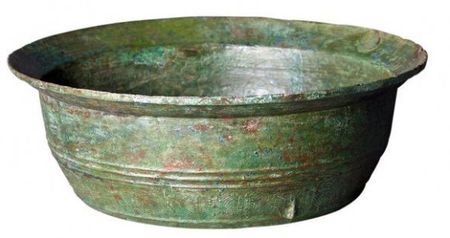
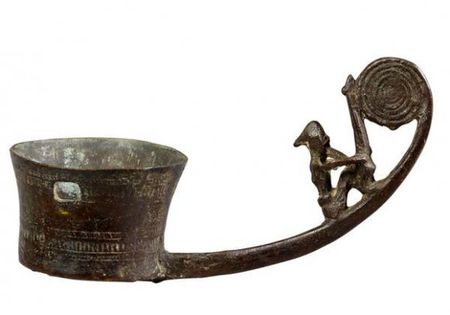

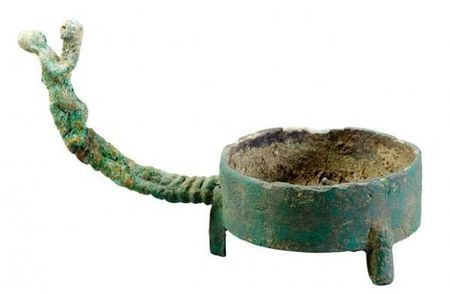
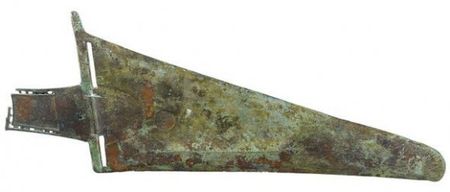
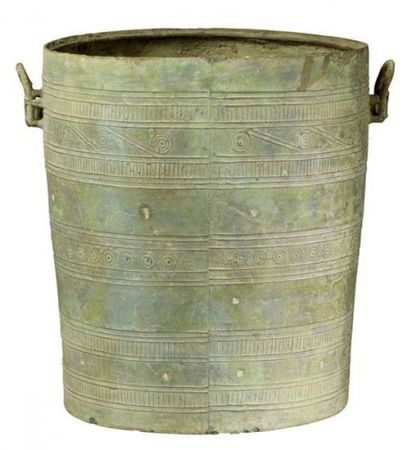

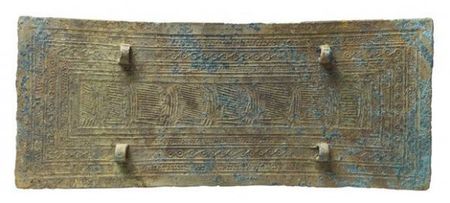
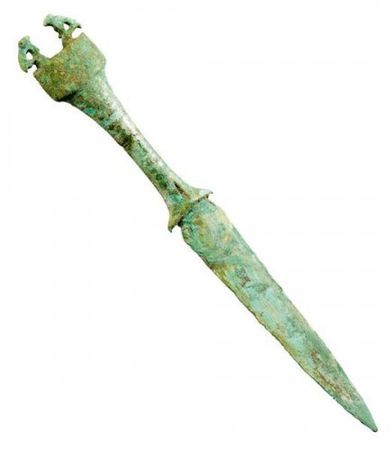

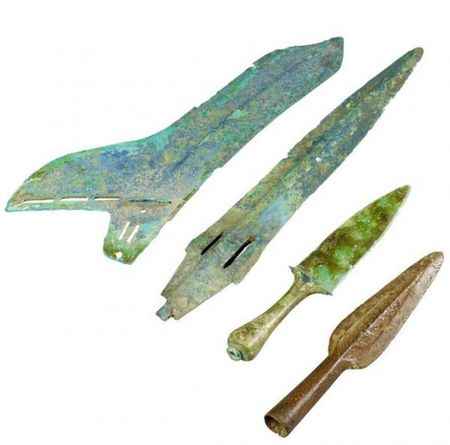


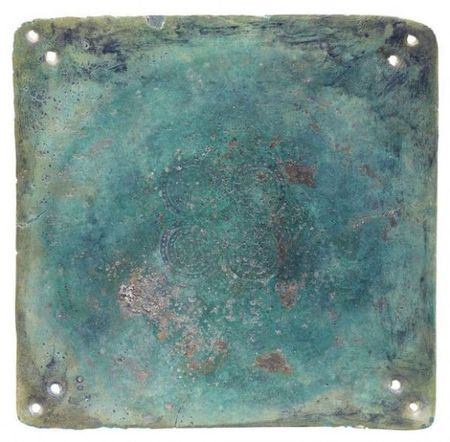

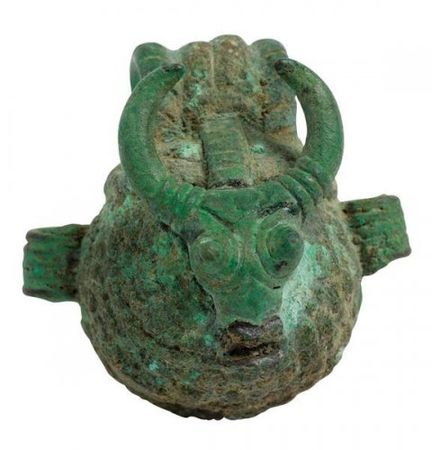
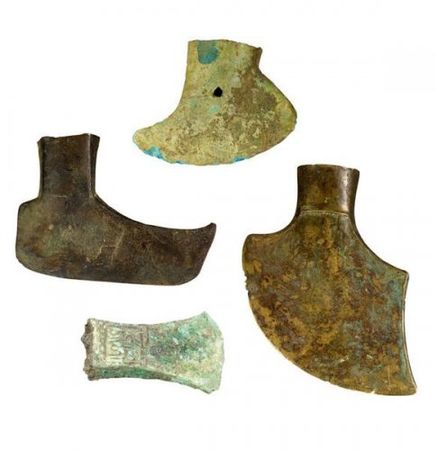
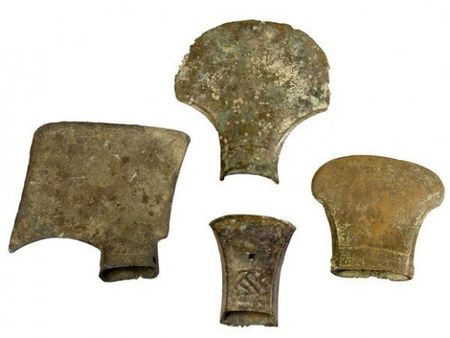



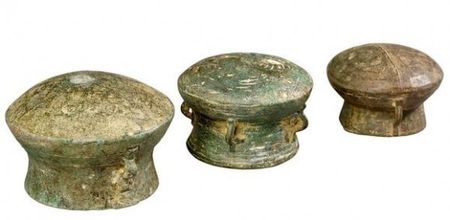






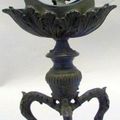


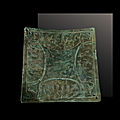

Download Empire Rome Rising Hacks Free working here:
ReplyDeletehttp://smashinghacks.net/download/empire-rome-rising-hack
http://smashinghacks.net/download/empire-rome-rising-hack
http://smashinghacks.net/download/empire-rome-rising-hack
http://smashinghacks.net/download/empire-rome-rising-hack
http://smashinghacks.net/download/empire-rome-rising-hack
http://smashinghacks.net/download/empire-rome-rising-hack
http://smashinghacks.net/download/empire-rome-rising-hack
http://smashinghacks.net/download/empire-rome-rising-hack
http://smashinghacks.net/download/empire-rome-rising-hack
http://smashinghacks.net/download/empire-rome-rising-hack
Assignment Global Company offers you dissertation help services that will make your thesis writing process easier and more enjoyable. Their team consists of professional writers who know everything about writing a thesis and can help you with any assignment.
ReplyDelete